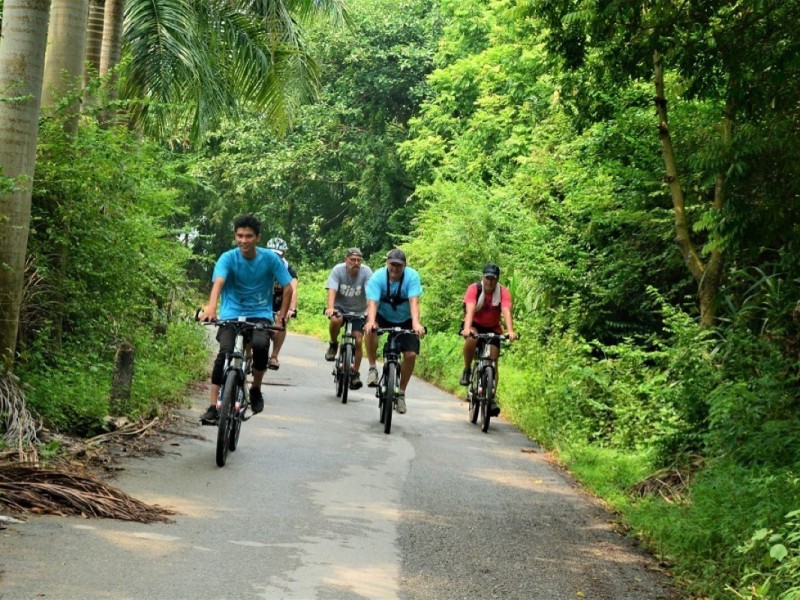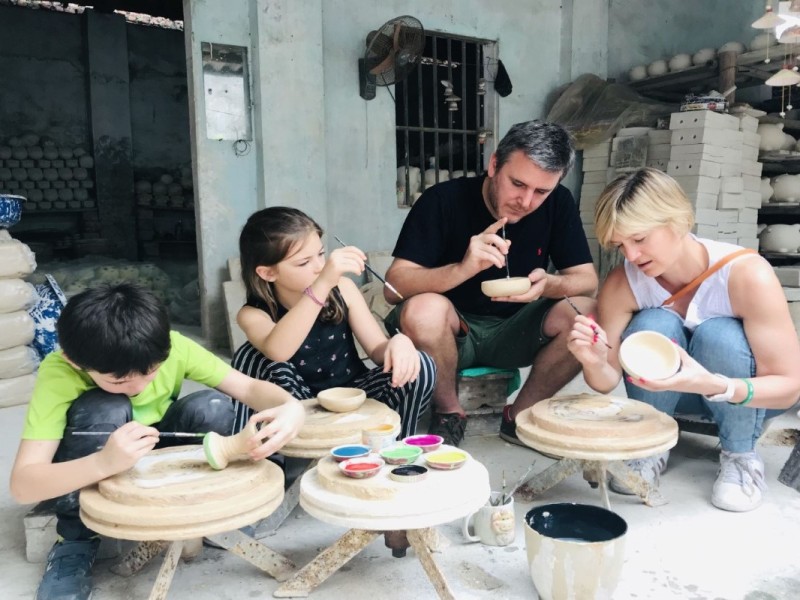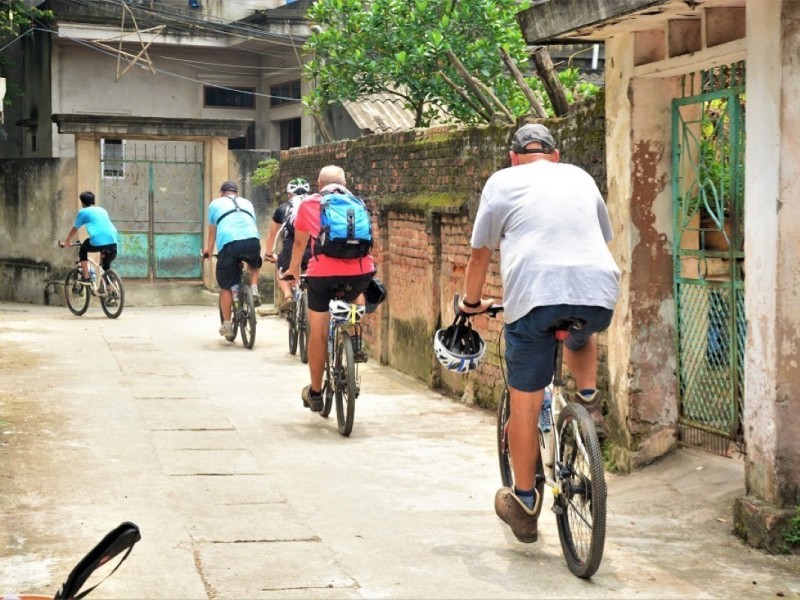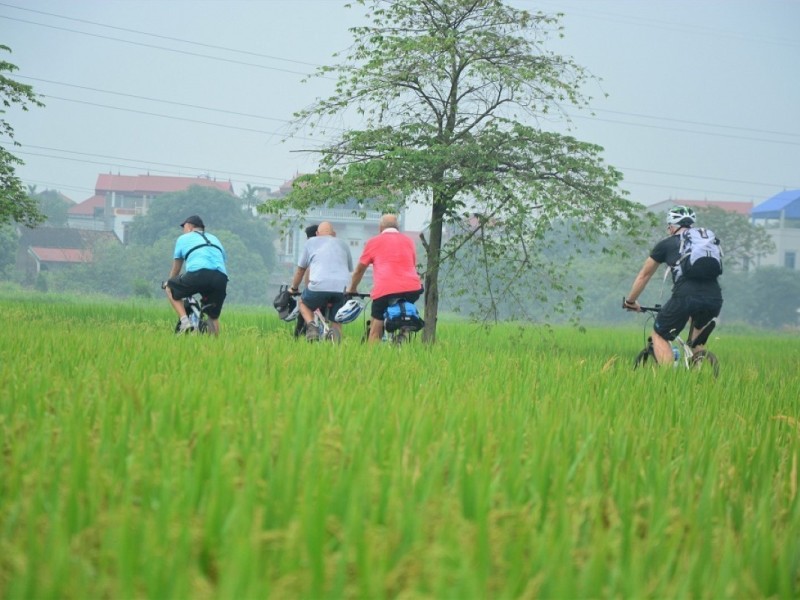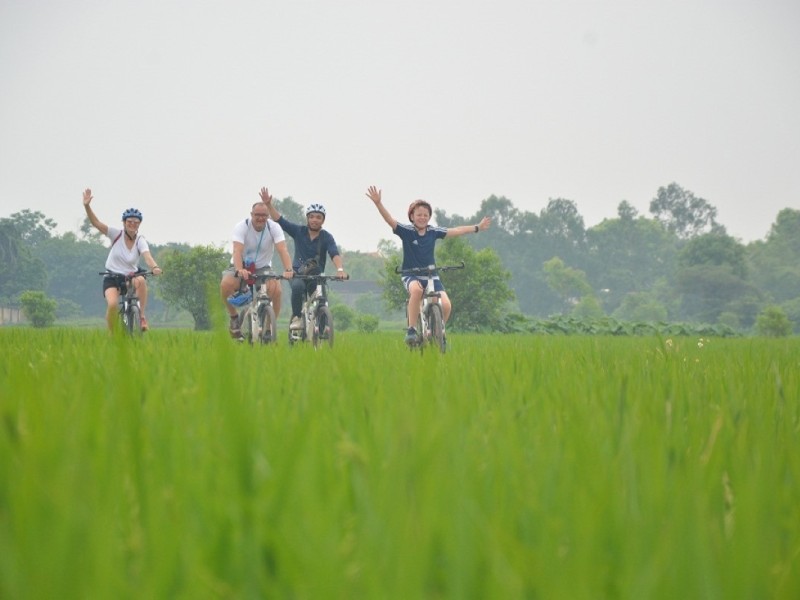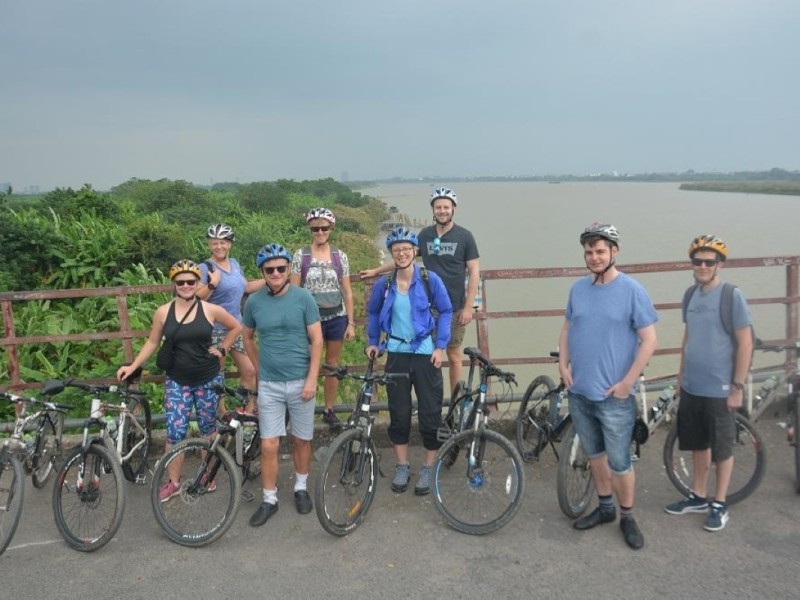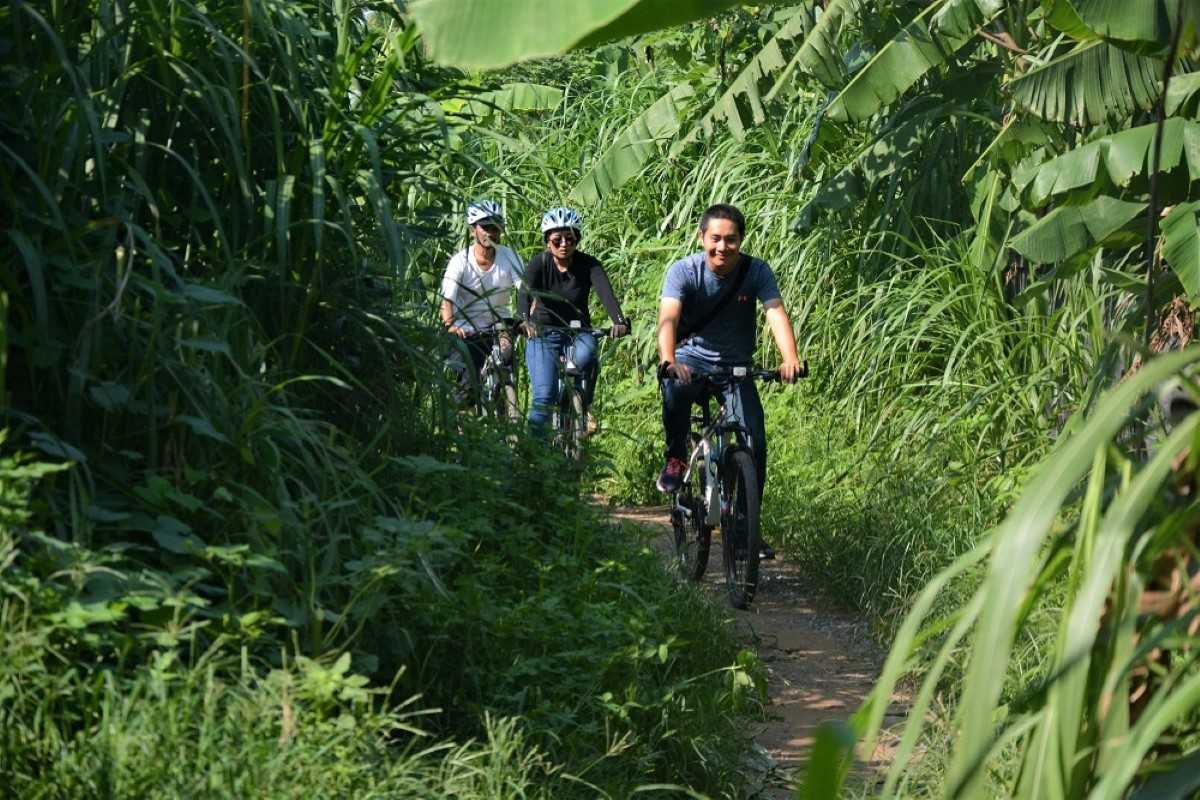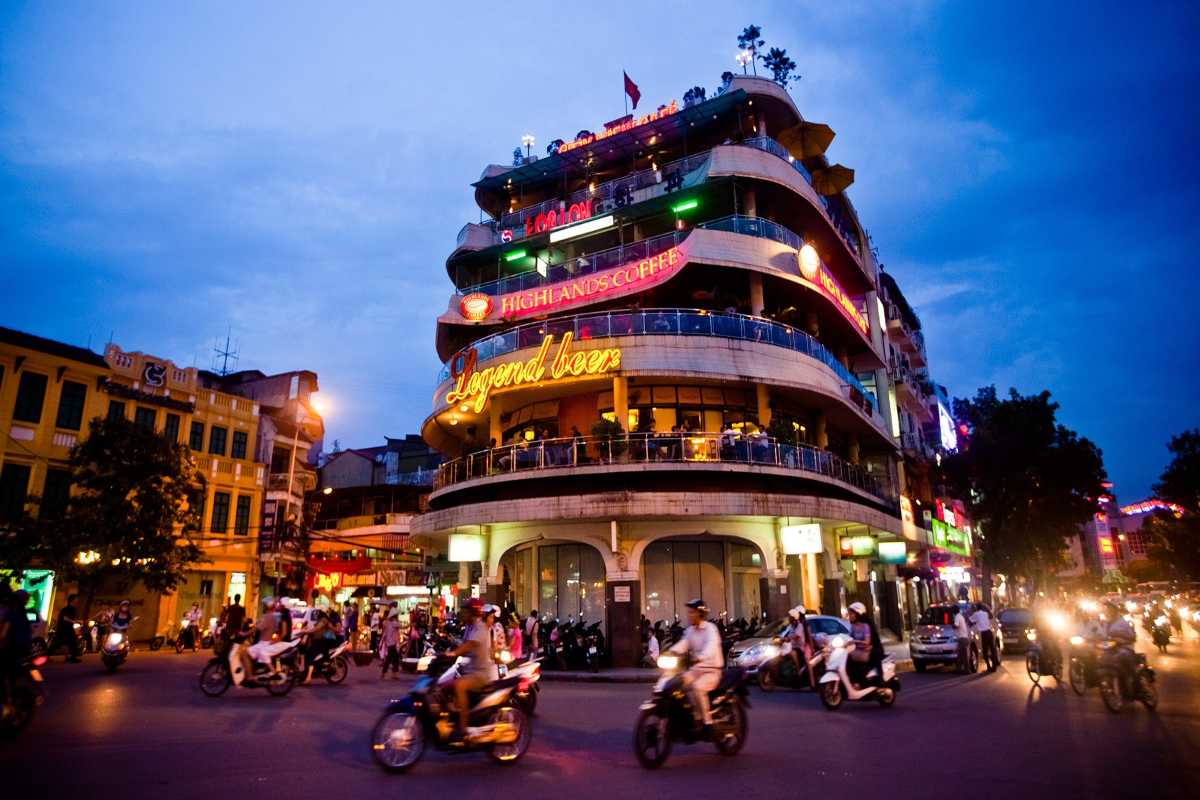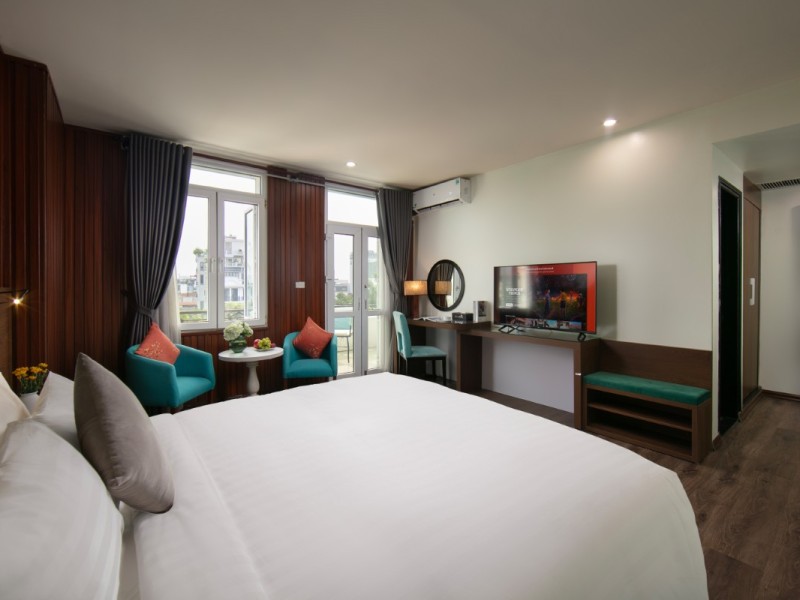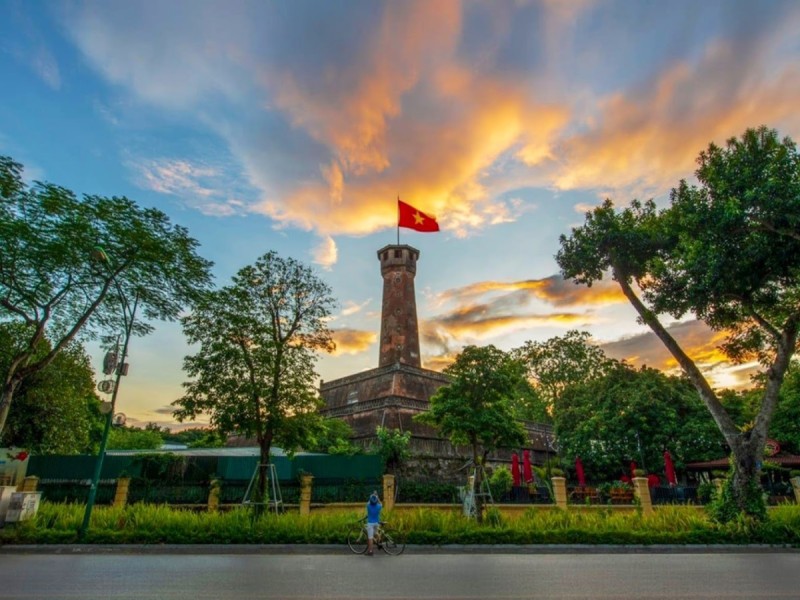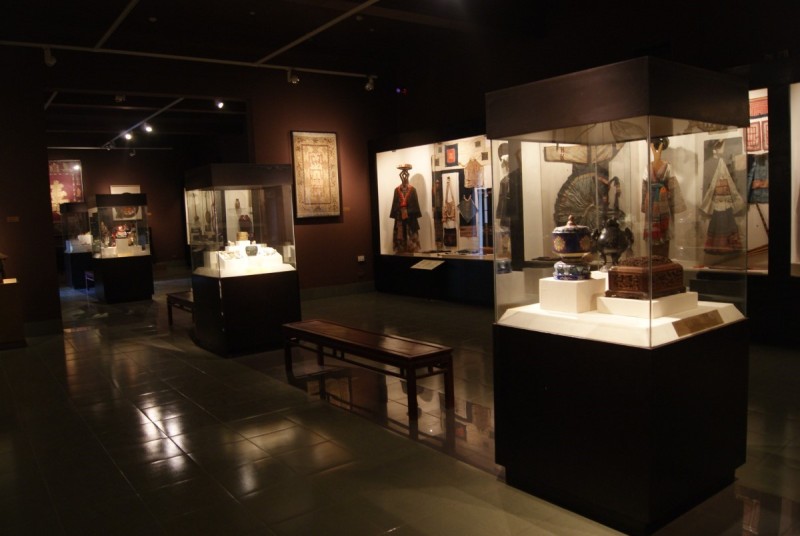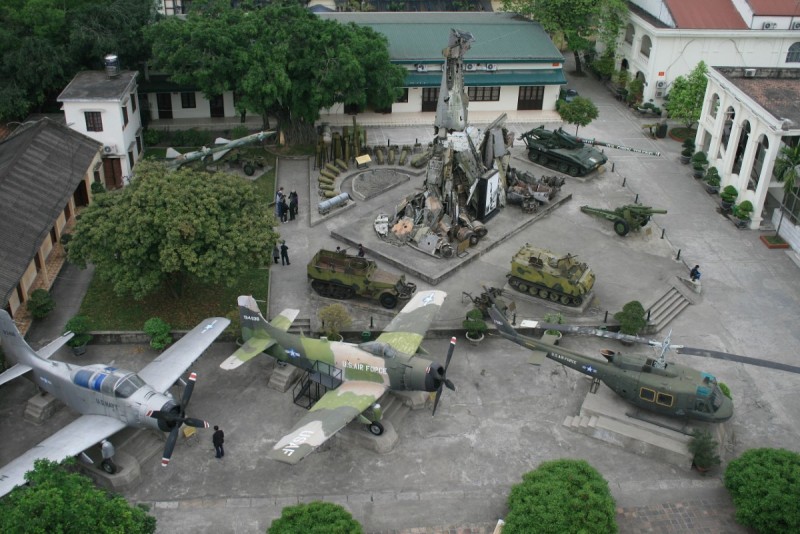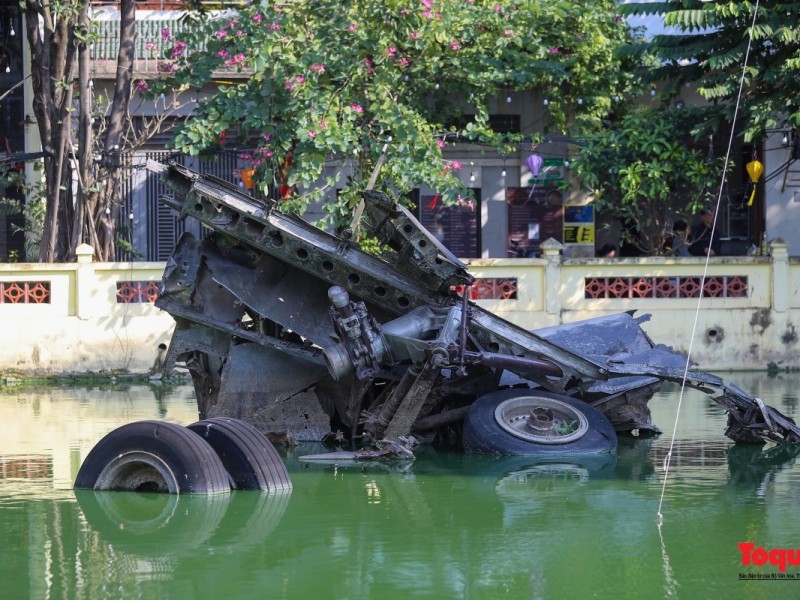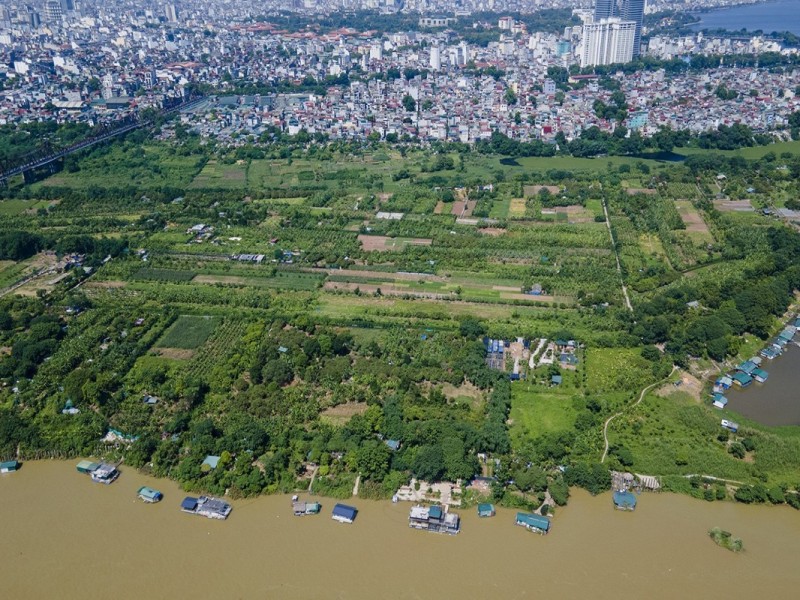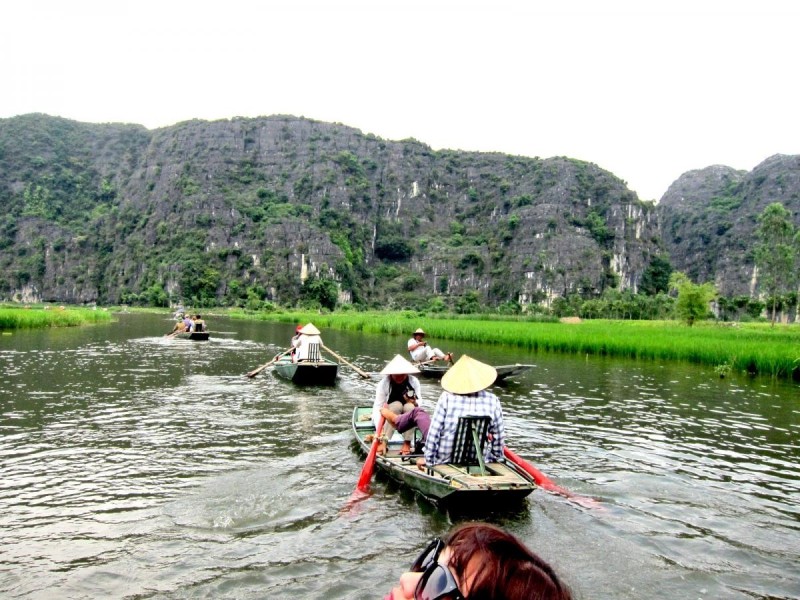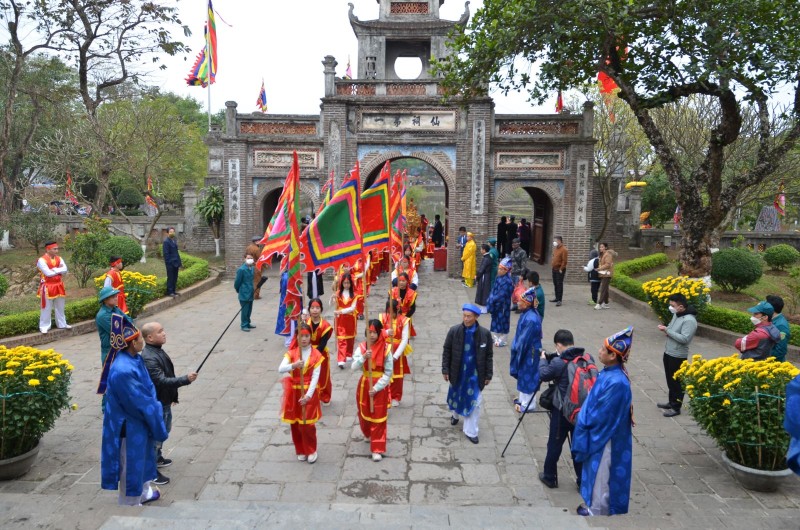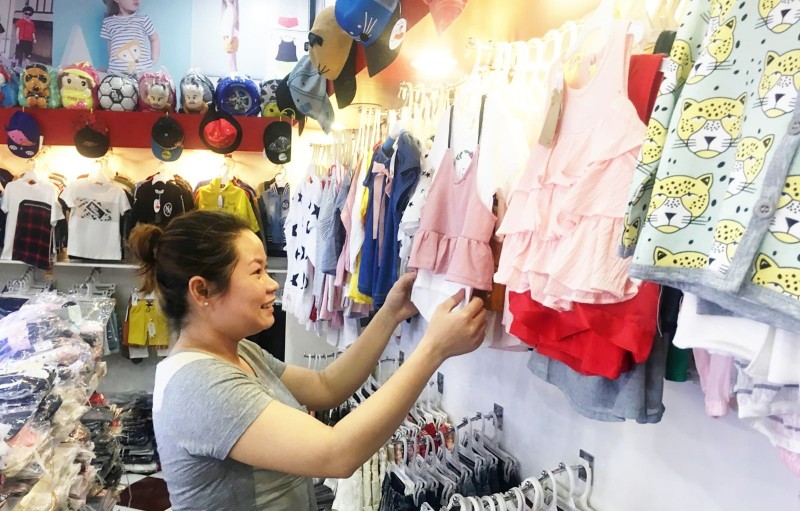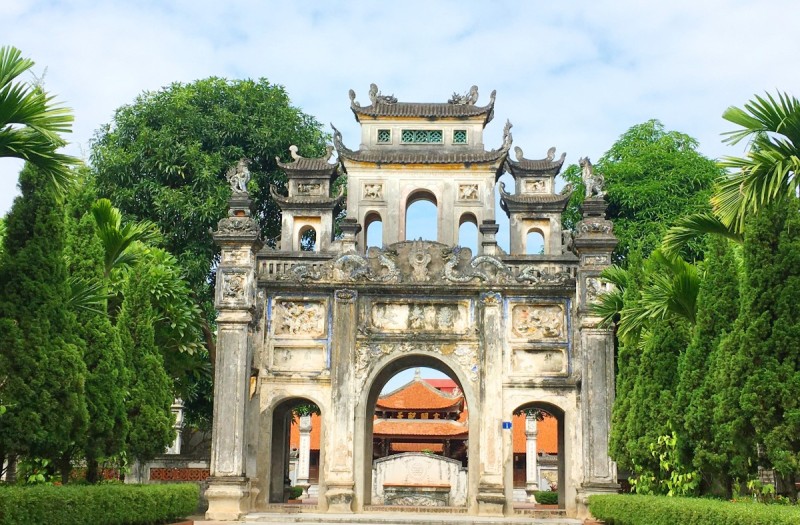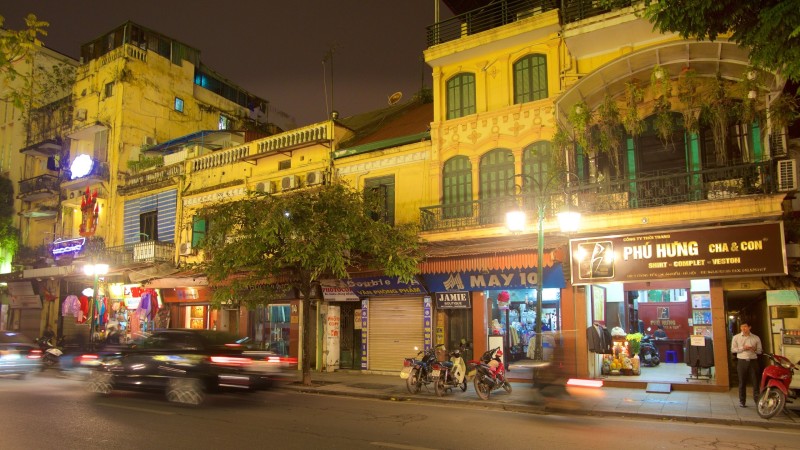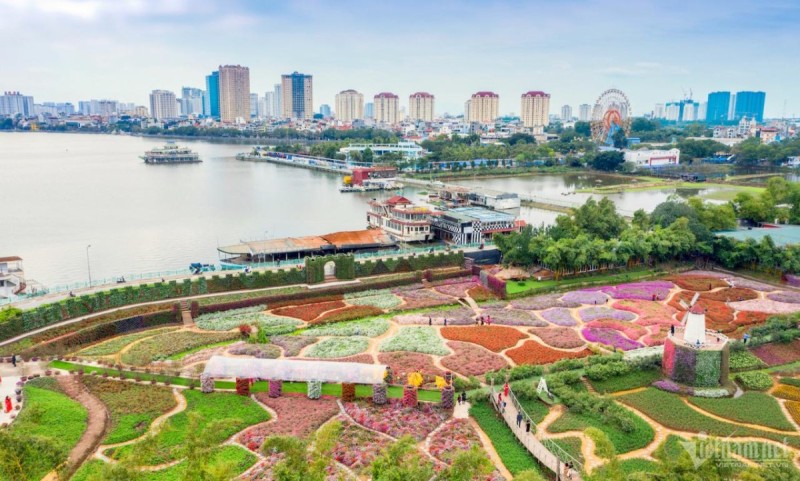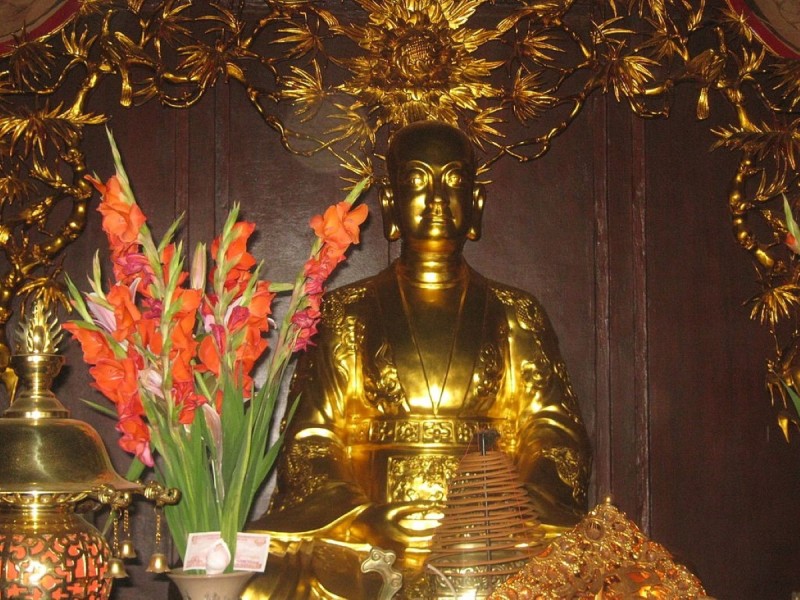Quan Su Pagoda Hanoi: Complete Travel Guide & Visitor Tips
Quan Su Pagoda is a historic Buddhist temple in Hanoi known for its stunning architecture and cultural significance. Visitors can explore its main prayer hall, tranquil gardens, and participate in traditional religious ceremonies, making it a key spiritual and cultural site in Vietnam’s capital city.
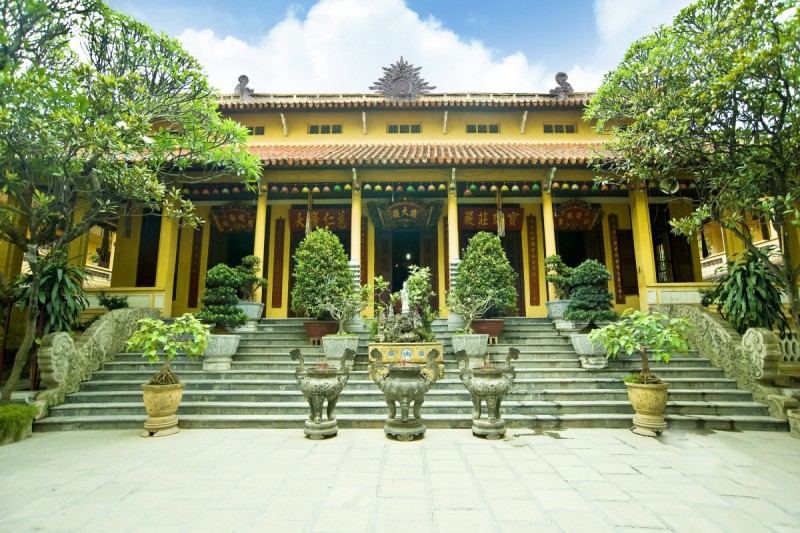
Introduction to Quan Su Pagoda
Quan Su Pagoda stands as one of Hanoi’s most important Buddhist temples, renowned for its rich history and deep cultural roots. Serving as the headquarters of the Vietnam Buddhist Sangha, the pagoda plays a vital role in the spiritual life of the city and the nation. Its striking architectural beauty and serene atmosphere invite visitors to explore its significance within Vietnamese culture and religion. This section introduces you to the essence of Quan Su Pagoda, explaining why it is a must-visit site in Hanoi.
Discover the rich heritage and unique charm that make Quan Su Pagoda a pivotal spiritual landmark in Vietnam’s capital. Plan your visit to experience its cultural depth and architectural splendor firsthand.
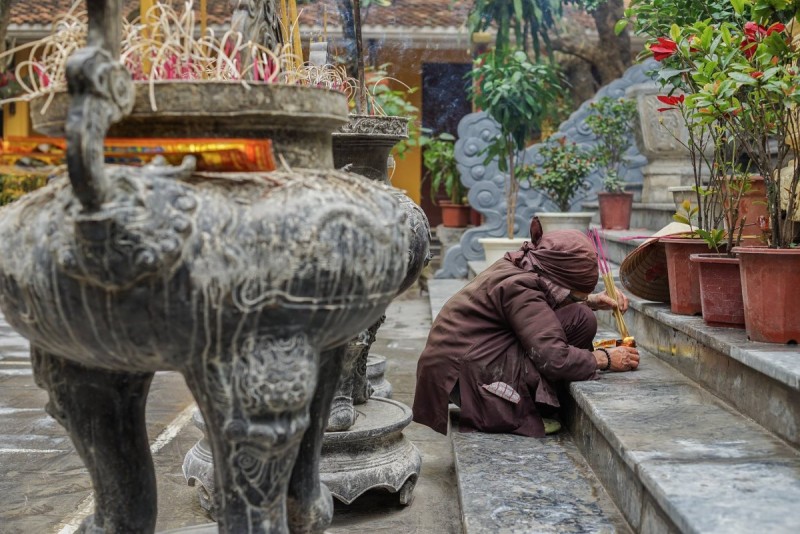
Overview of Quan Su Pagoda
An overview of Quan Su Pagoda reveals its stature as a central place of worship and cultural identity in Hanoi. Founded centuries ago, the pagoda has grown to become the main temple for the Vietnam Buddhist Sangha, attracting both local devotees and international visitors. Its location within the bustling capital juxtaposes calm spirituality with urban vibrancy.
The architectural highlights of the Hanoi pagoda showcase traditional Vietnamese design, reflecting influences from foreign envoys and intercultural exchanges over the years. This blend adds to its unique character and appeal.
Plan your visit with an understanding of the overview of Quan Su Pagoda and its role in local spiritual practices.
Historical significance as Hanoi’s key Buddhist site
This section highlights the historical importance of Quan Su Pagoda as a key Buddhist landmark in Hanoi:
- Foundation: Established as the central Buddhist site representing centuries of religious practice.
- Role: Headquarters of the Vietnam Buddhist Sangha, pivotal in shaping local spiritual life.
- Cultural Impact: Influenced religious practices across Hanoi and the wider region.
- Heritage: Witnessed various historical periods reflecting Vietnam’s changing dynasties and society.
These points illustrate why Quan Su Pagoda holds a revered place in Vietnamese culture and religion. Visit to witness this living history and spiritual heart of Hanoi.
Architectural highlights and design features
The architectural beauty of Quan Su Pagoda offers visitors a chance to admire traditional Vietnamese craftsmanship:
- Roof Design: Intricate curved roofs decorated with symbolic motifs.
- Statues: Impressive statues of Buddha and bodhisattvas throughout the prayer halls.
- Courtyard: Tranquil gardens and detailed carvings enhancing the spiritual ambiance.
- Influences: Blend of native and foreign styles reflecting Hanoi’s intercultural heritage.
These features define the unique visual and cultural appeal of Quan Su Pagoda. Explore these highlights and appreciate the artistry shaping this iconic site.
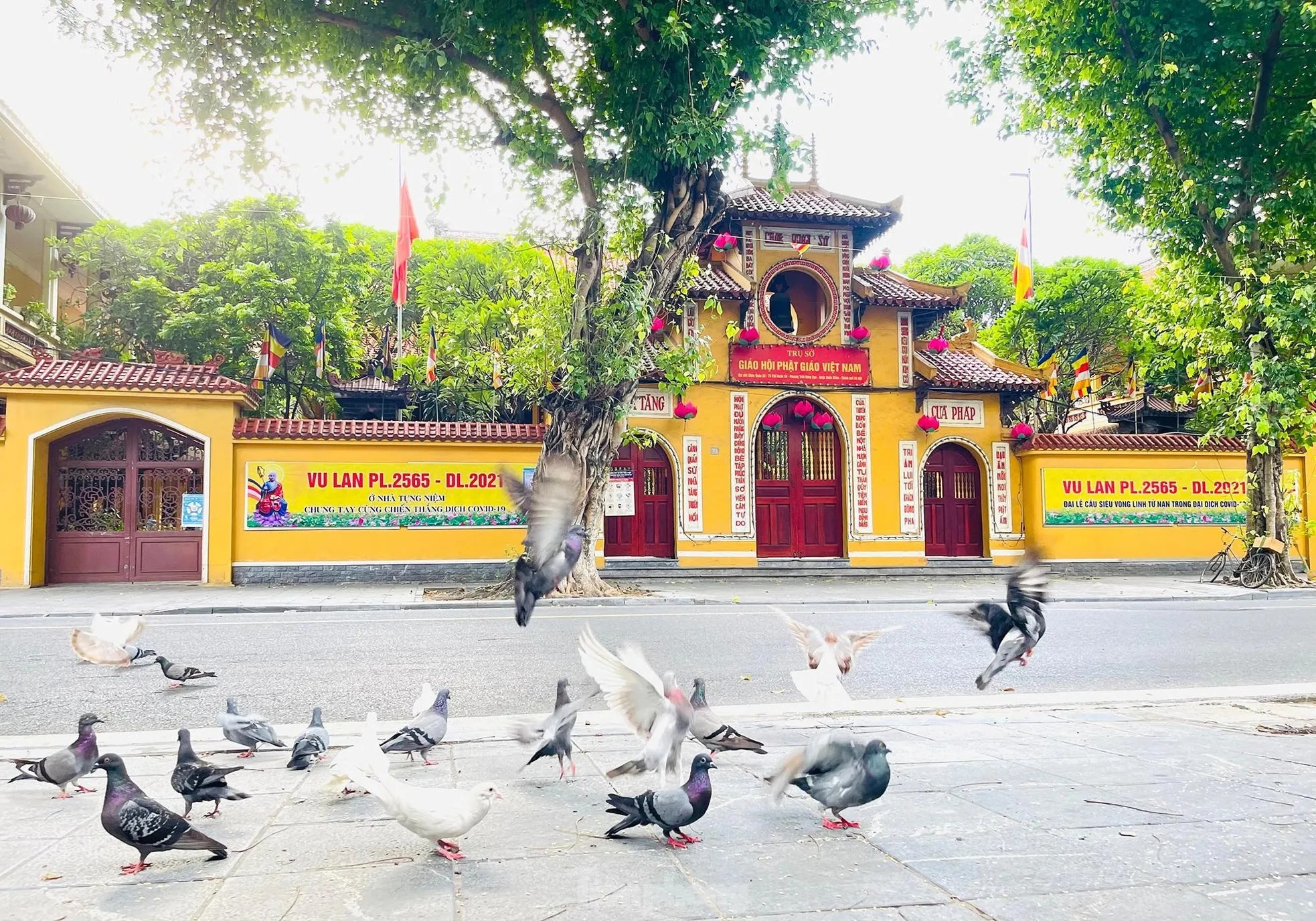
Importance in Vietnamese culture and religion
Quan Su Pagoda holds a vital place in Vietnamese culture and religion, serving as a spiritual hub that reflects the rich traditions of Buddhism in the country. As the headquarters of the Vietnam Buddhist Sangha, it plays an essential role in guiding religious activities and preserving the spiritual heritage of Vietnam. The pagoda influences local spiritual practices by fostering communal worship, ceremonies, and cultural events that bind the community. Understanding its religious significance offers insight into the cultural fabric of Hanoi and the broader Vietnamese society. Immerse yourself in the spiritual atmosphere of Quan Su Pagoda to appreciate its deep cultural roots.
Plan your visit to experience the living traditions and cultural heritage embodied at Quan Su Pagoda.
Role as headquarters of Vietnam Buddhist Sangha
The Vietnam Buddhist Sangha has its headquarters at Quan Su Pagoda, marking the site as the central institution for Buddhist governance and religious guidance in Vietnam. This organizational role emphasizes the pagoda’s importance beyond a place of worship—it acts as a center for leadership, education, and coordination of Buddhist activities across the nation. Visitors can recognize the institutional significance of Quan Su Pagoda through its active role in promoting Buddhist teachings and maintaining religious order.
Discover how Quan Su Pagoda functions as the heart of Vietnam’s Buddhist community during your visit.
Influence on local spiritual practices
Quan Su Pagoda significantly shapes local spiritual life through various community worship and ritual practices, such as:
- Hosting daily chanting and prayer sessions attended by locals and monks.
- Organizing traditional festivals that honor Buddhist holidays and seasonal events.
- Facilitating meditation programs open to the public, fostering mindfulness and peace.
- Serving as a venue for cultural ceremonies that integrate Vietnamese religious customs.
These activities illustrate the pagoda’s ongoing influence on community spiritual practices, enriching the cultural landscape of Hanoi.
Engage with the authentic spiritual traditions nurtured at Quan Su Pagoda to deepen your cultural experience.
Unique aspects compared to other Hanoi temples
Among Hanoi temples, Quan Su Pagoda stands out due to its rich historical background and distinctive cultural features. Unlike many other temples, it served as a key site for diplomatic activities involving foreign envoys, reflecting a unique intercultural heritage. Its architecture and religious functions combine traditional Vietnamese elements with influences brought by international connections. These aspects give Quan Su Pagoda a special place in Hanoi’s spiritual and cultural landscape. Understanding what sets it apart enhances appreciation of its significance.
Explore the unique character of Quan Su Pagoda to discover why it differs from other temples in Hanoi.
Connection to foreign envoys and intercultural heritage
The historical role of Quan Su Pagoda includes important connections to foreign envoys and diplomatic exchanges, which contributed to its intercultural heritage:
- Served as a spiritual center welcoming envoys from neighboring countries and beyond.
- Acted as a venue for cultural dialogue between Vietnamese Buddhism and foreign traditions.
- Architectural influences showcase a blend of Vietnamese and international styles.
- Preserved artifacts and records highlight centuries of diplomatic interactions.
These facts emphasize the pagoda’s role as a bridge between cultures, enriching its historical and spiritual value.
Experience this unique intercultural heritage during your visit to Quan Su Pagoda.
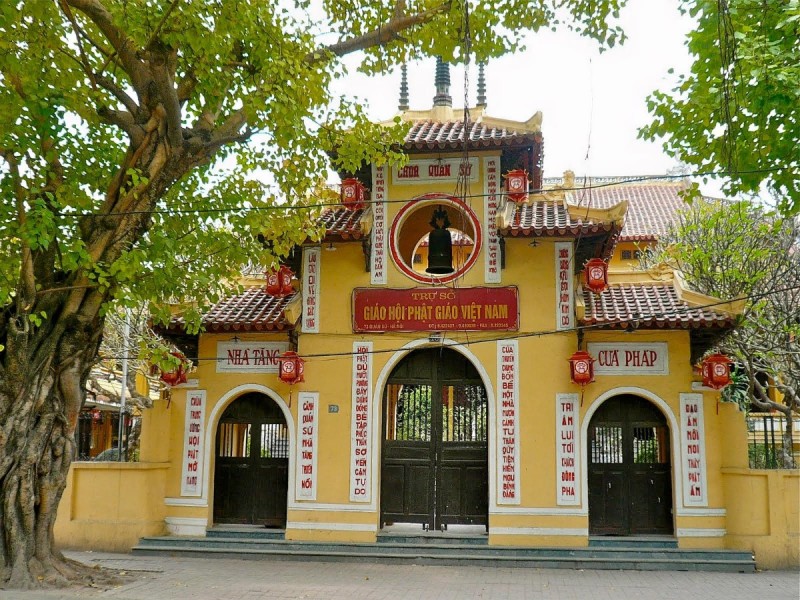
History and Cultural Background
Explore the rich history and cultural significance of Quan Su Pagoda, tracing its origins and evolution through Vietnamese dynasties.
Quan Su Pagoda history reveals a fascinating journey from its construction during the Later Le dynasty to its role as a cultural and religious beacon in Hanoi. This section explores the pagoda's founding, significant renovations, and its influence in diplomatic and religious affairs, highlighting why it remains a vital part of Vietnam's spiritual heritage. Understanding this history deepens appreciation for the pagoda's architectural and symbolic richness.
Immerse yourself in the storied past of Quan Su Pagoda and discover the layers of history that shape its present.
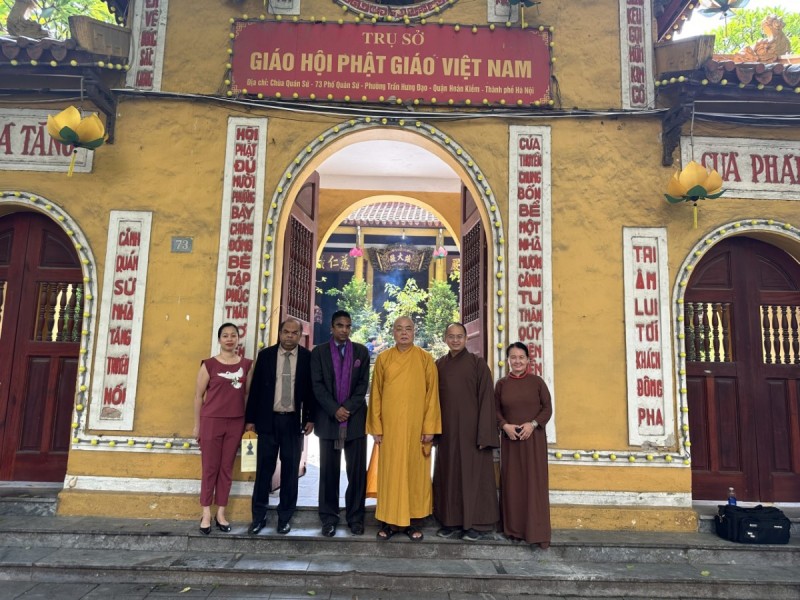
Founding and Historical Timeline
The founding of Quan Su Pagoda dates back to the Later Le dynasty, marking its origins as a pivotal spiritual site. Over the centuries, it has witnessed key historical milestones that reflect Vietnam's dynastic changes and evolving religious landscape. This timeline outlines these moments chronologically to help you grasp the pagoda's enduring significance.
Explore the major events in the history of Quan Su Pagoda and how they influenced its development.
Construction during the Later Le dynasty
During the Later Le dynasty, Quan Su Pagoda was constructed with distinct architectural features and religious purposes that established it as a spiritual center. Key aspects include:
- Foundation as a Buddhist temple supporting local religious practices.
- Architectural style reflecting Later Le dynasty aesthetics.
- Use of traditional materials and craftsmanship indicative of the era.
- Strategic location for religious and political functions.
These details underscore the pagoda's significance as a historical monument shaped by the cultural forces of its time.
Plan your visit to witness the enduring legacy of Later Le dynasty Vietnam at Quan Su Pagoda.
Renovations and restorations over centuries
Throughout its existence, Quan Su Pagoda has undergone several renovations and restorations to preserve its structure and artistic integrity. Notable efforts include:
- Repair works during various Vietnamese dynasties to maintain the pagoda's stability.
- Restoration of statues, murals, and architectural elements to conserve cultural heritage.
- Modern conservation projects ensuring the site’s longevity for future generations.
These ongoing efforts highlight the commitment to maintaining the pagoda's historical and spiritual importance.
Experience the carefully preserved beauty of Quan Su Pagoda shaped by centuries of care and restoration.
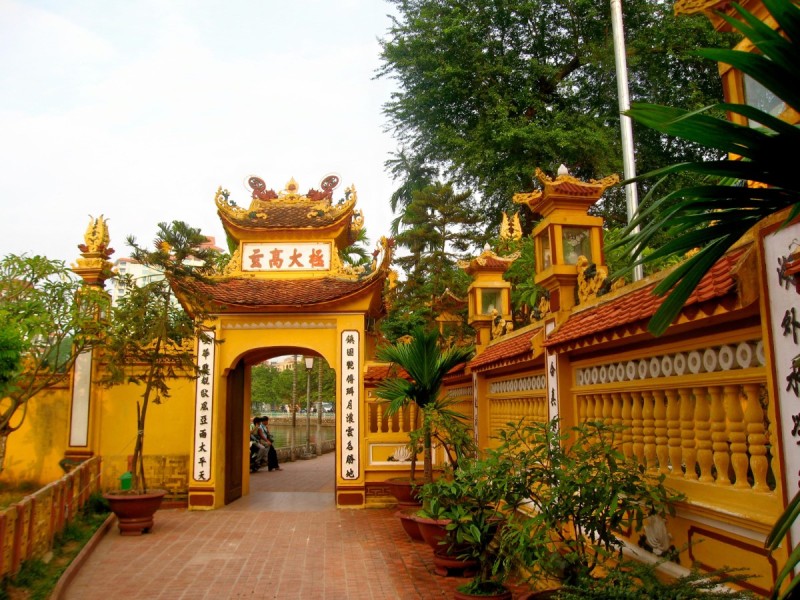
Religious and Political Role Through History
The diplomatic role of Quan Su Pagoda has been significant throughout its history, serving as both a religious sanctuary and a center for political engagement during various Vietnamese dynasties. The pagoda functioned as a meeting place for envoys and a venue where spiritual leadership intersected with governance. This dual role underscores its importance in shaping the cultural and political landscape of Hanoi and Vietnam as a whole.
Explore how Quan Su Pagoda bridged spiritual practice and diplomatic affairs, highlighting its unique place in Vietnamese history.
Use by envoys and diplomatic connections
Quan Su Pagoda historically hosted foreign envoys and played a pivotal role in diplomatic relations, evidenced by:
- Welcoming envoys from neighboring kingdoms and distant lands for religious and political dialogue.
- Facilitating cultural exchanges that influenced Vietnamese Buddhist practices.
- Serving as a venue for negotiations and ceremonies involving diplomatic representatives.
- Preserving records and artifacts highlighting its intercultural significance.
These diplomatic connections enrich the pagoda’s legacy as a site of intercultural heritage and historical importance.
Experience the rich history of envoys and diplomatic connections Vietnam at Quan Su Pagoda.
Role during various Vietnamese dynasties
Throughout different Vietnamese dynasties, Quan Su Pagoda adapted to changing political and religious landscapes:
- Supported the spiritual needs of rulers and commoners alike.
- Served as a symbol of religious authority and political influence.
- Underwent expansions and renovations aligned with dynastic priorities.
- Played a part in state rituals and ceremonies reinforcing royal power.
Understanding these evolving roles offers insight into the complex history of Quan Su Pagoda as a living institution.
Delve into the pagoda’s shifting roles across Vietnam’s dynasties to fully appreciate its enduring significance.
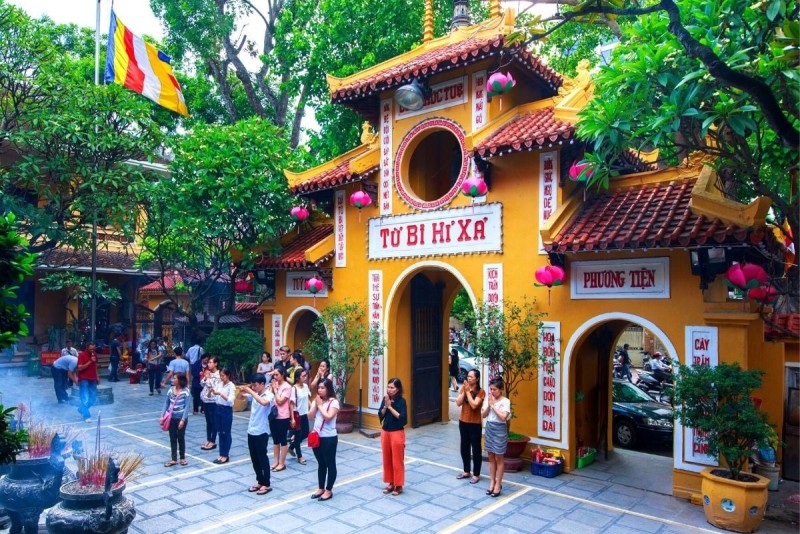
Cultural Artifacts and Symbolism
The statues and relics at Quan Su Pagoda offer visitors a profound glimpse into Vietnamese culture and religion. These artifacts carry deep symbolic meanings that reflect centuries of spiritual tradition and artistic craftsmanship. From intricately carved statues to carefully preserved relics, each element tells a story rooted in faith and history. Exploring these features enriches your understanding of the pagoda’s cultural significance and spiritual depth.
Discover the symbolic meanings Vietnamese pagoda designs embody and appreciate the rich heritage preserved at Quan Su Pagoda. Plan your visit to connect with these timeless cultural treasures.
Significant statues and relics inside the pagoda
Visitors to Quan Su Pagoda will encounter a variety of important religious artifacts, including:
- Buddha Statues: Majestic figures representing enlightenment and compassion.
- Bodhisattva Sculptures: Symbolizing mercy and protection for worshippers.
- Ancient Relics: Preserved sacred objects tied to the pagoda’s founding and history.
- Altar Decorations: Intricate carvings and offerings reflecting spiritual devotion.
These artifacts showcase the spiritual heart of Quan Su Pagoda and invite reflection and respect.
Take time to observe these sacred items to deepen your connection with the pagoda’s heritage.
Symbolic meanings in architecture and artwork
The architecture and artwork of Quan Su Pagoda are rich with symbolism, including:
- Dragons and Phoenixes: Representing power, prosperity, and rebirth.
- Lotus Motifs: Emblematic of purity and spiritual awakening.
- Guardian Figures: Protecting the temple and its sacred grounds.
- Color Symbolism: Use of reds and golds to convey luck and sanctity.
These design elements reflect the spiritual beliefs and cultural values embedded in Vietnamese pagoda traditions.
Understanding these symbols enhances appreciation of the pagoda’s artistic and religious significance.
Exclusive tips: lesser-known artifacts visitors should notice
For a richer experience at Quan Su Pagoda, look out for these lesser-known features:
- Hidden Murals: Rare paintings depicting historical and religious scenes.
- Ancient Incense Burners: Unique craftsmanship rarely found elsewhere.
- Old Calligraphy Scrolls: Handwritten texts preserving Buddhist teachings.
- Quiet Meditation Corners: Secluded spots offering peaceful reflection away from crowds.
These hidden gems provide an exclusive glimpse into the pagoda’s layered history and spiritual life.
Explore these special artifacts to enhance your visit beyond the usual highlights.
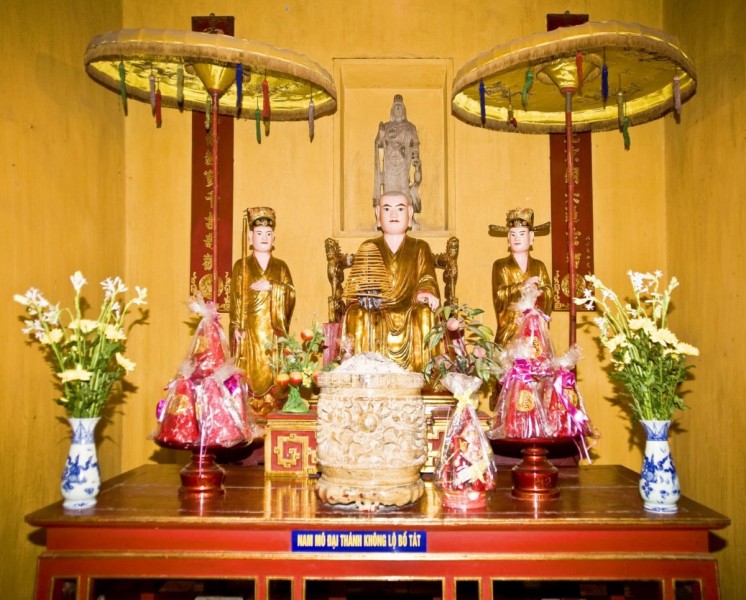
Visiting Quan Su Pagoda
Find practical information for visiting Quan Su Pagoda, including location, opening hours, entry fees, and visitor facilities.
Visiting Quan Su Pagoda requires some preparation to ensure a smooth and enjoyable experience. Located in the heart of Hanoi, the pagoda welcomes travelers with its spiritual ambiance and cultural richness. This section provides essential details about the pagoda’s location, opening hours, entry fees, and facilities, helping you plan your visit effectively. Whether you are arriving by public transport, taxi, or on foot, understanding these logistics will make your trip seamless and rewarding.
Plan your trip with confidence using these practical tips for visiting Quan Su Pagoda.
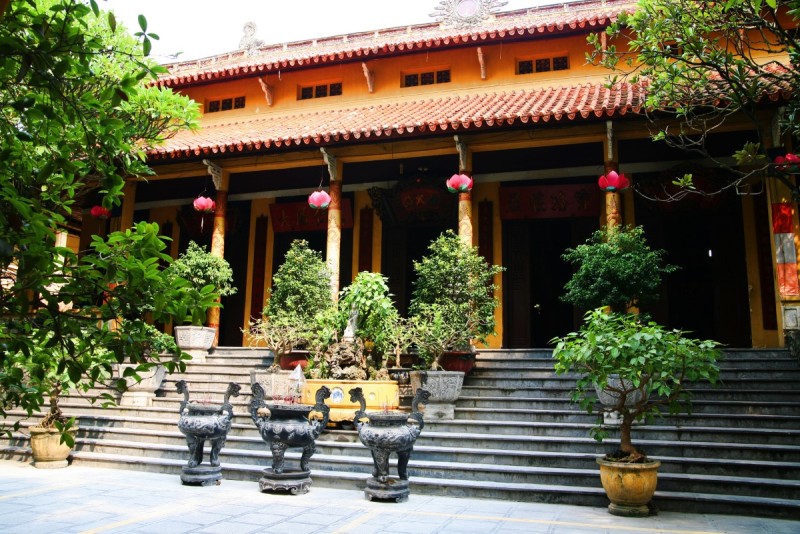
Location and How to Get There
Finding the Quan Su Pagoda location is straightforward when you know the options available. Whether coming from the city center or nearby attractions, there are multiple ways to reach the pagoda conveniently. This guide covers key routes and transportation methods, including taxis, buses, and walking directions.
Learn how to get to Quan Su Pagoda easily using public and private transport options.
Exact address and neighborhood context in Hanoi
Quan Su Pagoda address is 73 Quan Su Street, Hanoi, situated in a bustling neighborhood rich with history and culture. The pagoda lies near prominent landmarks like the Hanoi Opera House and is surrounded by traditional markets and local eateries. This central location makes it accessible and a key stop in any Hanoi itinerary.
Knowing the exact address helps you navigate the city and locate the pagoda with ease.
Public transport options and routes
Getting to Quan Su Pagoda by public transport is cost-effective and convenient. Consider these options:
- Bus Lines: Routes 09, 22, and 28 stop near the pagoda.
- Bus Stops: The closest stop is Quan Su Bus Station, just a short walk away.
- Tips: Purchase a day pass for unlimited bus rides in Hanoi to save money.
Using public transit offers an authentic local experience while reaching the pagoda efficiently.
Taxi, ride-hailing, and walking directions
For more comfort and flexibility, taxis and ride-hailing apps like Grab are popular ways to reach Quan Su Pagoda. Here’s how:
- Request a taxi or Grab with the destination “73 Quan Su Street, Hanoi.”
- From nearby attractions like Hoan Kiem Lake, walking to the pagoda takes about 10 minutes.
- Follow pedestrian-friendly streets with signage directing you toward the temple.
Choosing these options helps tailor your visit to your schedule and preferences.

Opening Hours and Entry Information
Knowing the Quan Su Pagoda opening hours and entry information is essential for planning your visit smoothly. The pagoda welcomes visitors daily with specific hours designed to accommodate both worshippers and tourists. Understanding the entry fees and visitor etiquette ensures respectful participation in the spiritual atmosphere and helps maintain the site’s integrity.
Plan your visit by reviewing the opening times, fees, and behavioral guidelines to make the most of your experience at Quan Su Pagoda.
Daily visiting hours and best times to visit
The visiting hours Quan Su Pagoda are typically from 7:00 AM to 5:00 PM daily. To enjoy a more peaceful experience, consider these tips:
- Visit early morning to witness morning prayers and avoid large crowds.
- Late afternoon visits offer serene lighting for photography and reflection.
- Weekdays tend to be less busy than weekends and holidays.
Timing your visit can greatly enhance your connection to the pagoda’s tranquil environment.
Entry fees, donations, and visitor etiquette
Visiting Quan Su Pagoda usually does not require an entry fee, but donations are welcomed to support maintenance. Keep these visitor guidelines in mind:
- Donations: Voluntary contributions help preserve the pagoda’s heritage.
- Dress Code: Wear modest clothing covering shoulders and knees.
- Behavior: Maintain silence, avoid flash photography, and respect worshippers.
- Shoes: Remove footwear before entering prayer halls as a sign of respect.
Observing these practices ensures a respectful and enriching visit for all.
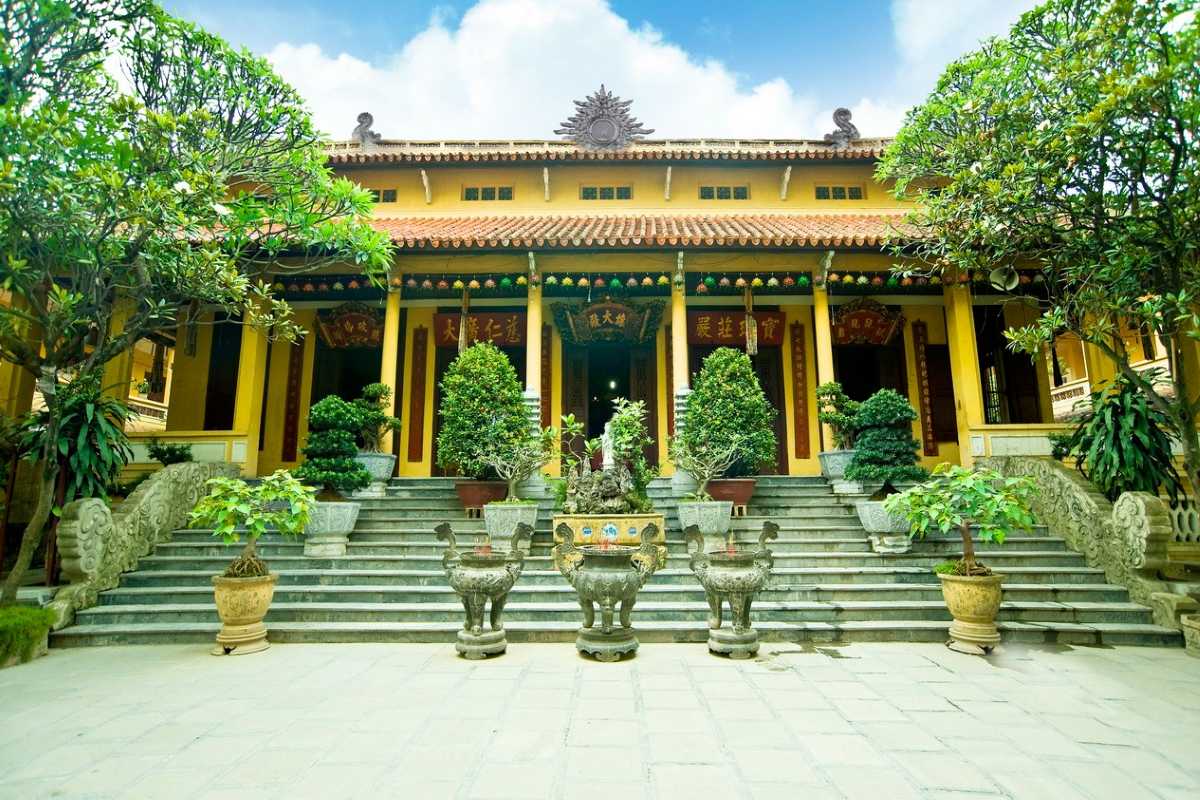
Accessibility and Visitor Facilities
Ensuring a comfortable and accessible visit, Quan Su Pagoda provides facilities catering to all guests, including those with mobility challenges. This section highlights key amenities and guidelines that help visitors plan their trip with ease and confidence. Whether you require special accommodations or seek convenient amenities, the pagoda strives to welcome everyone respectfully and thoughtfully.
Prepare for your visit by understanding the available Quan Su Pagoda accessibility features and visitor facilities.
Facilities for people with mobility challenges
Facilities for disabled visitors Quan Su Pagoda include thoughtful accommodations to ensure accessibility:
- Wheelchair ramps at main entrances and key areas.
- Assistance available from staff for navigating steps or uneven surfaces.
- Reserved seating areas within prayer halls for visitors with limited mobility.
- Accessible pathways connecting gardens and main structures.
These features demonstrate the pagoda’s commitment to inclusivity and visitor comfort.
Plan your visit knowing Quan Su Pagoda supports mobility needs with care and consideration.
On-site amenities (restrooms, seating areas)
Visitors to Quan Su Pagoda can enjoy several convenient amenities, such as:
- Clean restrooms located near the main entrance.
- Ample seating areas in the gardens and inside the pagoda for rest.
- Water fountains and refreshment points nearby.
- Information desks providing assistance and guidance.
These amenities help make your visit comfortable and enjoyable.
Take advantage of these facilities to relax and fully experience the serenity of Quan Su Pagoda.
Photography rules and guidelines
To respect the sanctity of Quan Su Pagoda, visitors should observe these photography guidelines:
- Photography is allowed in most outdoor and garden areas.
- Flash photography is prohibited inside prayer halls to preserve artwork.
- Avoid taking photos of worshippers without permission.
- Silence cameras and phones during ceremonies and chanting.
Following these rules ensures a respectful environment for all visitors and worshippers.
Respect the spiritual atmosphere by adhering to photography rules Quan Su Pagoda during your visit.
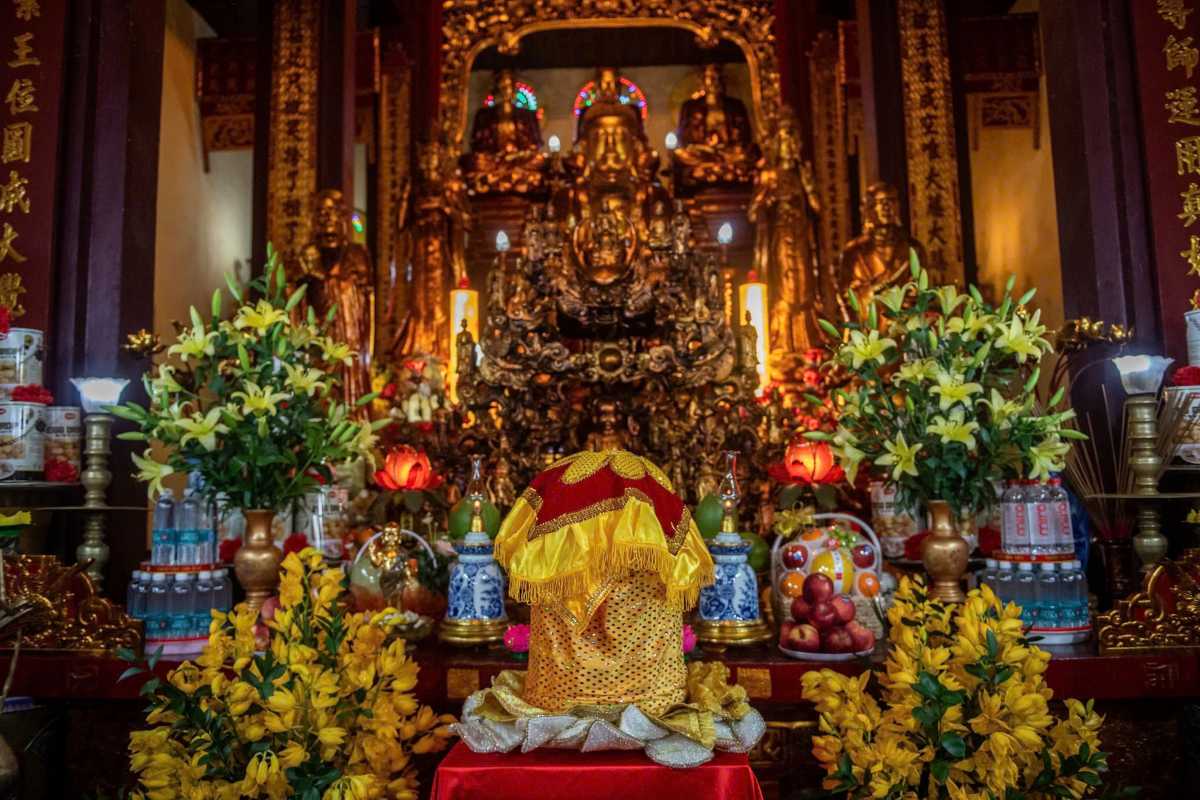
Things To See and Do at Quan Su Pagoda
Discover the top things to do at Quan Su Pagoda including the main prayer hall, gardens, and religious activities.
Things to do at Quan Su Pagoda include exploring its stunning main prayer hall, peaceful gardens, and participating in meaningful religious ceremonies. This section highlights key attractions and activities that invite you to engage deeply with the spiritual and cultural essence of the pagoda. Whether admiring architectural details or joining chanting sessions, there is much to experience during your visit.
Explore the many facets of Quan Su Pagoda and enrich your trip with these memorable activities.
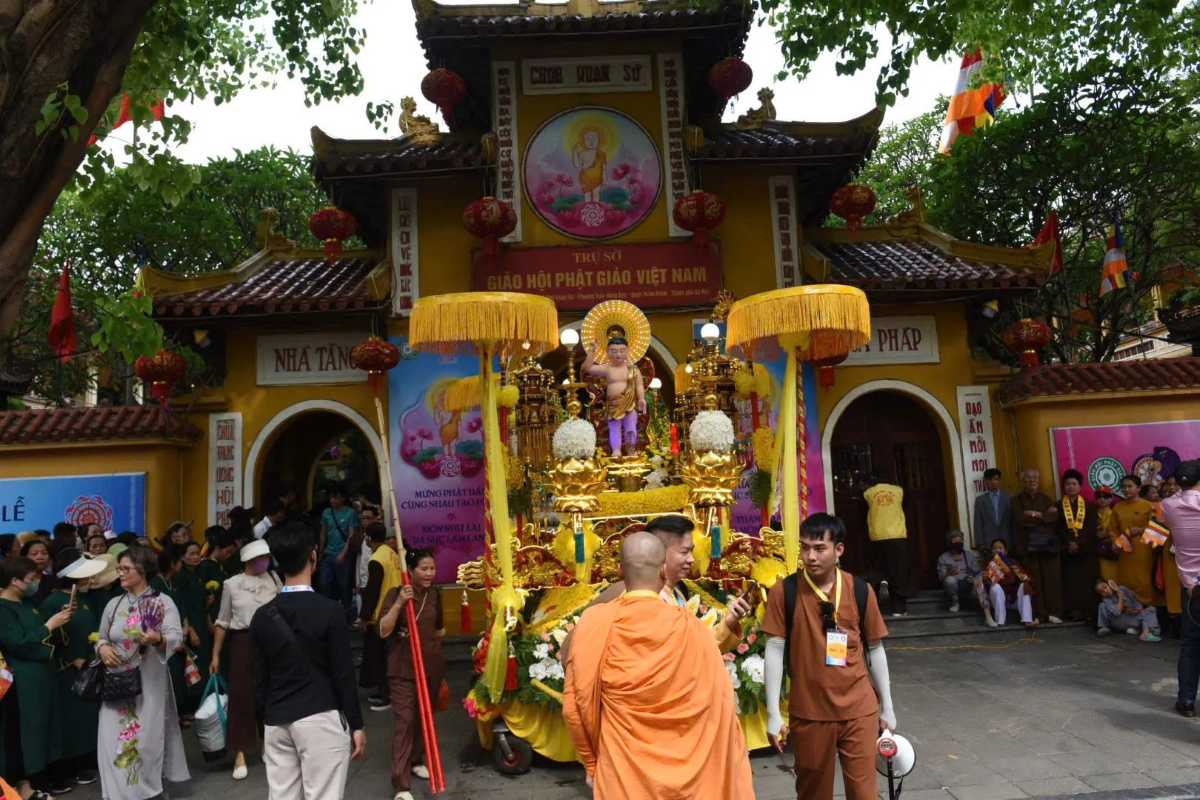
Exploring the Main Prayer Hall
The Main Prayer Hall Quan Su Pagoda is the spiritual core of the temple, housing significant statues and intricate architectural features. This hall serves as a place for worship, meditation, and reflection, drawing visitors who appreciate both its religious importance and artistic beauty.
Discover the sacred ambiance and craftsmanship that make the main prayer hall a highlight of your visit to Quan Su Pagoda.
Key statues and their significance
Inside the Main Prayer Hall Quan Su Pagoda, several statues hold deep religious meaning:
- Buddha Statue: Symbolizes enlightenment and compassion.
- Guanyin Bodhisattva: Represents mercy and kindness.
- Historical Figures: Statues commemorating important Buddhist teachers.
- Guardian Deities: Protectors of the temple and its visitors.
These statues are central to worship practices and spiritual contemplation within the hall.
Take time to observe these statues to appreciate their symbolic significance at Quan Su Pagoda.
Architectural details to observe
Visitors should note these notable architectural elements in the Main Prayer Hall Quan Su Pagoda:
- Carved Wooden Beams: Showcasing traditional craftsmanship.
- Painted Murals: Depicting Buddhist stories and symbolism.
- Intricate Roof Tiles: Featuring classic Vietnamese motifs.
- Ornate Altars: Richly decorated for ritual use.
These features reveal the artistry and cultural heritage embedded in the pagoda’s design.
Appreciate the architectural beauty that defines Quan Su Pagoda as a masterpiece of Vietnamese religious art.
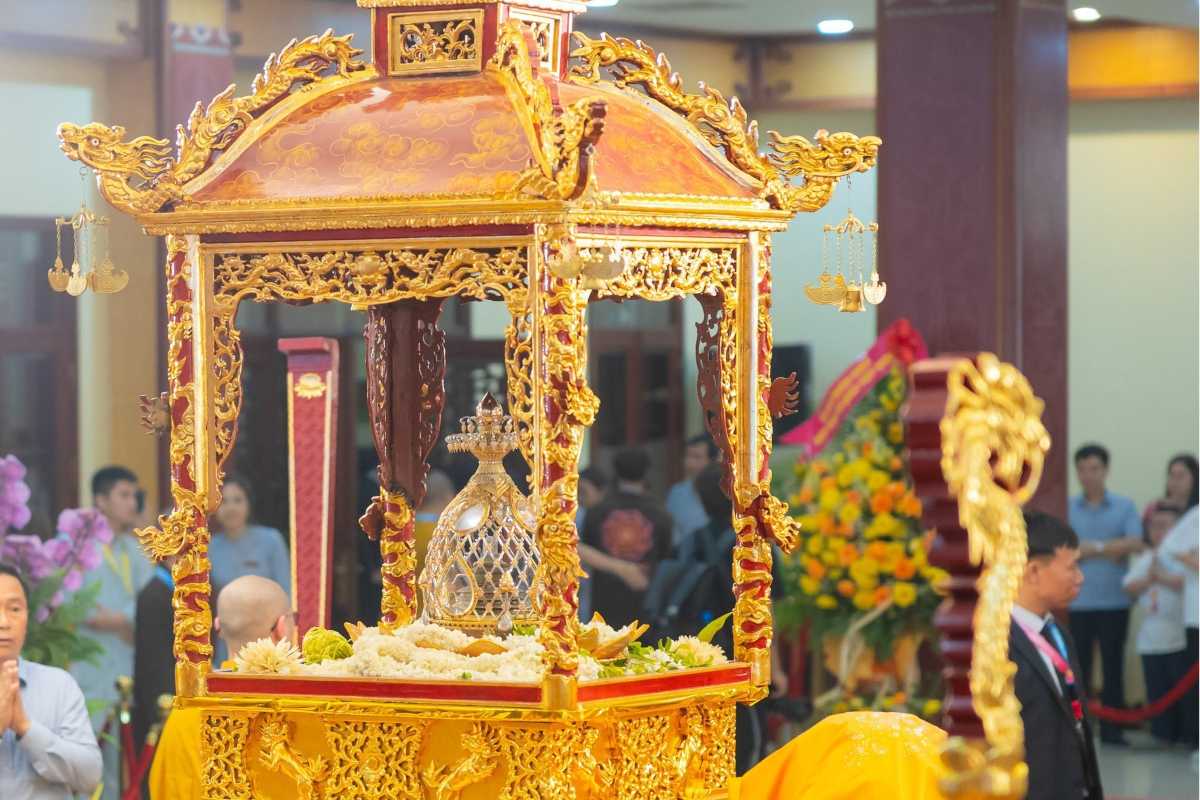
Gardens and Surrounding Areas
The gardens at Quan Su Pagoda offer visitors a serene escape from the bustle of Hanoi. These tranquil outdoor spaces are thoughtfully designed to complement the spiritual atmosphere of the pagoda. Visitors can enjoy quiet moments among lush greenery, water features, and peaceful walkways. The gardens change with the seasons, providing a dynamic natural backdrop that enhances the overall experience.
Discover the calming ambiance and natural beauty that make the gardens a vital part of Quan Su Pagoda.
Description of gardens and tranquil spaces
The gardens at Quan Su Pagoda are carefully maintained to create a peaceful environment for reflection:
Visitors will find winding paths shaded by ancient trees and flowering shrubs. Water ponds with koi fish add to the tranquil setting. Benches and quiet corners encourage moments of meditation and rest. The layout balances natural beauty with traditional Vietnamese garden aesthetics.
These elements combine to make the gardens an essential part of the visitor experience at Quan Su Pagoda.
Seasonal plants and landscaping features
The plant life in the pagoda gardens shifts with the seasons, showcasing:
- Spring Blossoms: Colorful azaleas and orchids brighten the grounds.
- Summer Foliage: Lush bamboo and tropical palms provide cool shade.
- Autumn Leaves: Changing foliage adds warm tones and texture.
- Winter Evergreens: Pine trees maintain greenery and serenity.
This seasonal variety ensures the gardens remain visually engaging throughout the year.
Take time to appreciate the seasonal plants pagoda gardens when you visit Quan Su Pagoda.
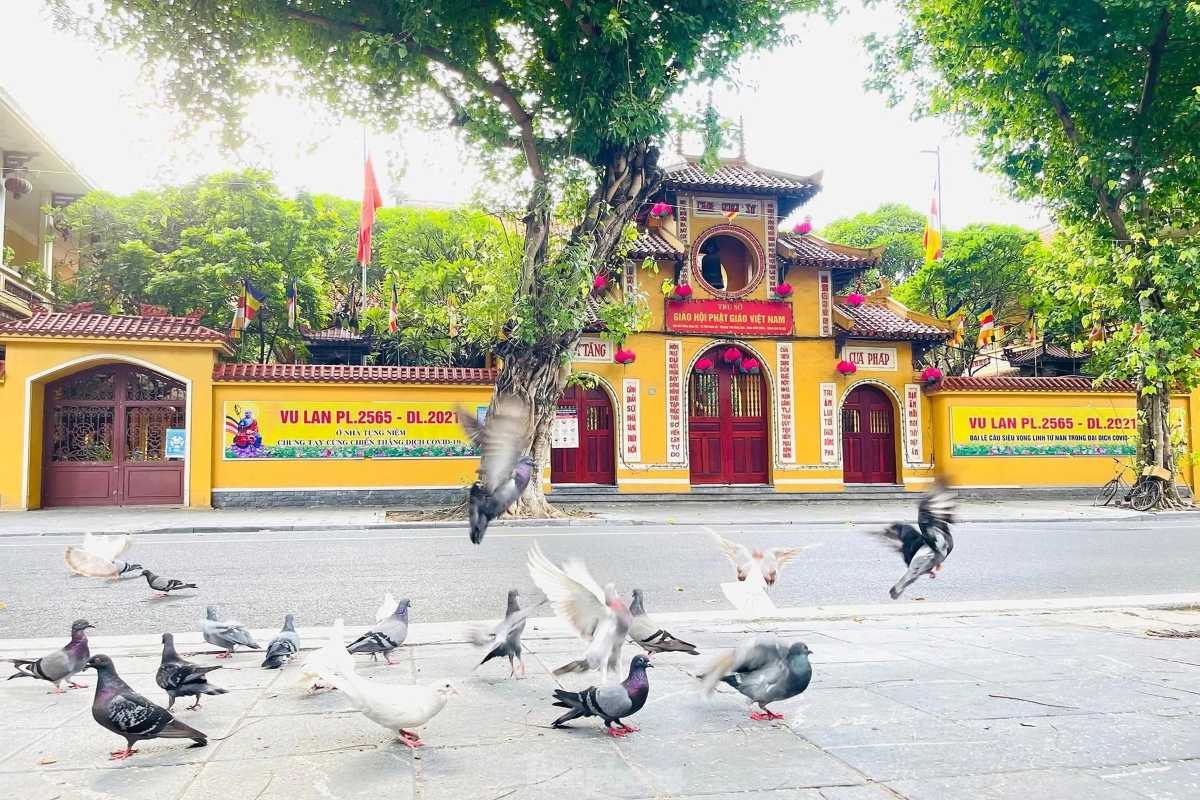
Participating in Religious Activities
Engaging in religious activities Quan Su Pagoda offers visitors a meaningful way to connect with local spiritual traditions. The pagoda regularly hosts chanting sessions and meditation ceremonies that welcome both worshippers and interested guests. Participating in these activities allows you to experience the peaceful rhythm of Buddhist practice and deepen your understanding of the temple’s spiritual life.
Discover how to join in these sacred moments during your visit to Quan Su Pagoda.
Observing chanting and prayer sessions
During chanting sessions Quan Su Pagoda, visitors are invited to quietly observe or join in the rhythmic recitations of Buddhist scriptures. Etiquette includes:
- Arriving on time and finding a respectful place to sit or stand.
- Maintaining silence and refraining from disruptive behavior.
- Removing hats and turning off electronic devices.
- Following the lead of monks and worshippers during the ceremony.
These sessions create a reverent atmosphere that enhances spiritual reflection.
Experience the calm and devotion of chanting sessions Quan Su Pagoda with respect and mindfulness.
How to join meditation or special ceremonies
Visitors interested in meditation ceremonies Quan Su Pagoda can participate by following these steps:
- Check the pagoda’s schedule for meditation sessions or special events.
- Register or inform temple staff of your intent to join.
- Wear modest, comfortable clothing suitable for sitting quietly.
- Arrive early to settle in and follow instructions from the meditation leader.
- Respect silence and maintain focus throughout the ceremony.
These simple steps help you fully engage with the temple’s spiritual offerings.
Join a meditation session at Quan Su Pagoda to experience inner peace and cultural immersion.
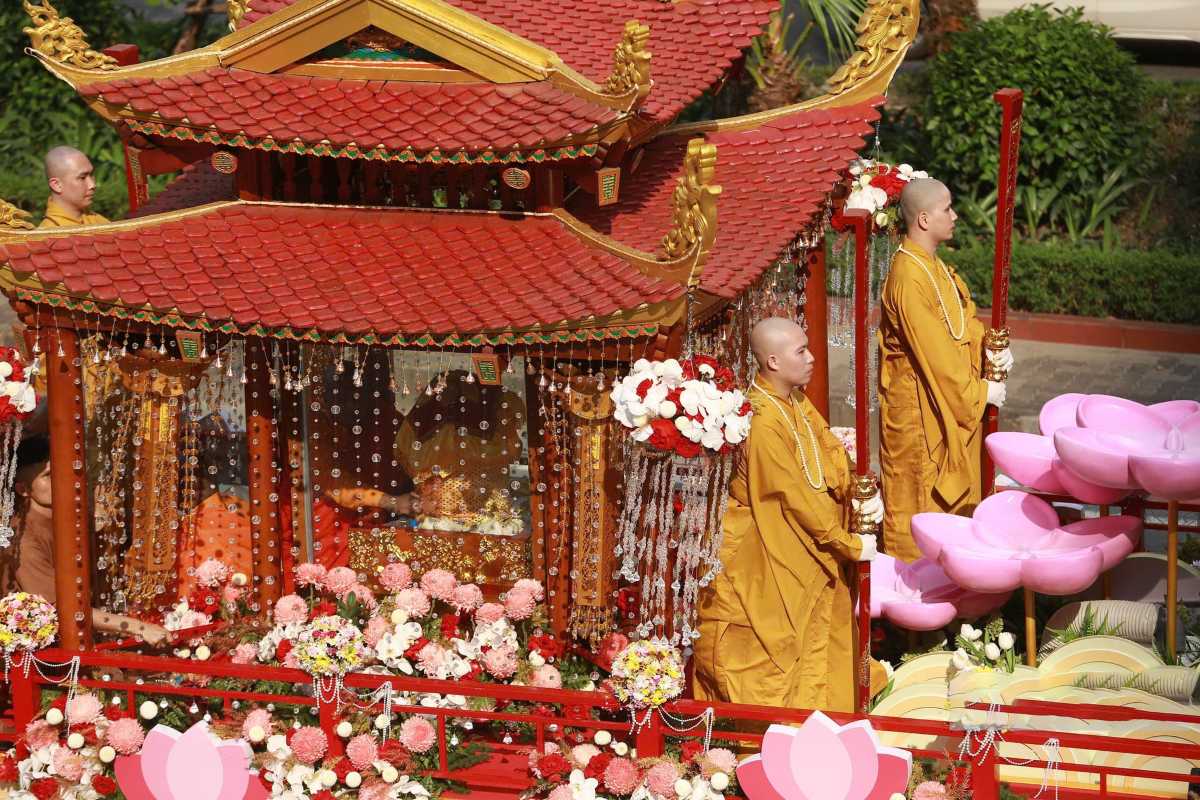
Guided Tours and Educational Opportunities
Booking a Quan Su Pagoda guided tour offers visitors a richer understanding of the temple’s history, architecture, and spiritual significance. Guided tours provide expert commentary that brings stories and symbolism to life, helping you connect more deeply with the site. Whether you prefer a group tour or a private visit, educational opportunities at the pagoda enhance your cultural experience and provide valuable insights.
Consider joining an educational tour Quan Su Pagoda to make your visit more meaningful and informed.
Options for guided visits and booking info
Visitors can choose from several options when booking tours at Quan Su Pagoda:
- Local tour operators offering group and private tours with knowledgeable guides.
- Online booking platforms that simplify reservations ahead of your visit.
- On-site tour arrangements available through the pagoda’s visitor center.
- Customizable tours combining Quan Su Pagoda with other Hanoi attractions.
Booking early ensures you secure your preferred tour type and maximize your visit.
Reach out to trusted providers or visit Asia Travel Links for assistance with booking Quan Su Pagoda tours.
Insightful commentary and storytelling benefits
Guided tours at Quan Su Pagoda provide more than facts—they offer immersive storytelling that brings the site’s history and spiritual practices to life. Through engaging commentary, guides help visitors appreciate:
- The symbolic meanings behind statues and architecture.
- Anecdotes about historical figures and events linked to the pagoda.
- The role of the pagoda within Vietnamese culture and religion.
- Details about ongoing religious ceremonies and community life.
These insights enrich your visit and deepen your connection to the temple’s heritage.
Enhance your cultural understanding by choosing an educational tour Quan Su Pagoda.
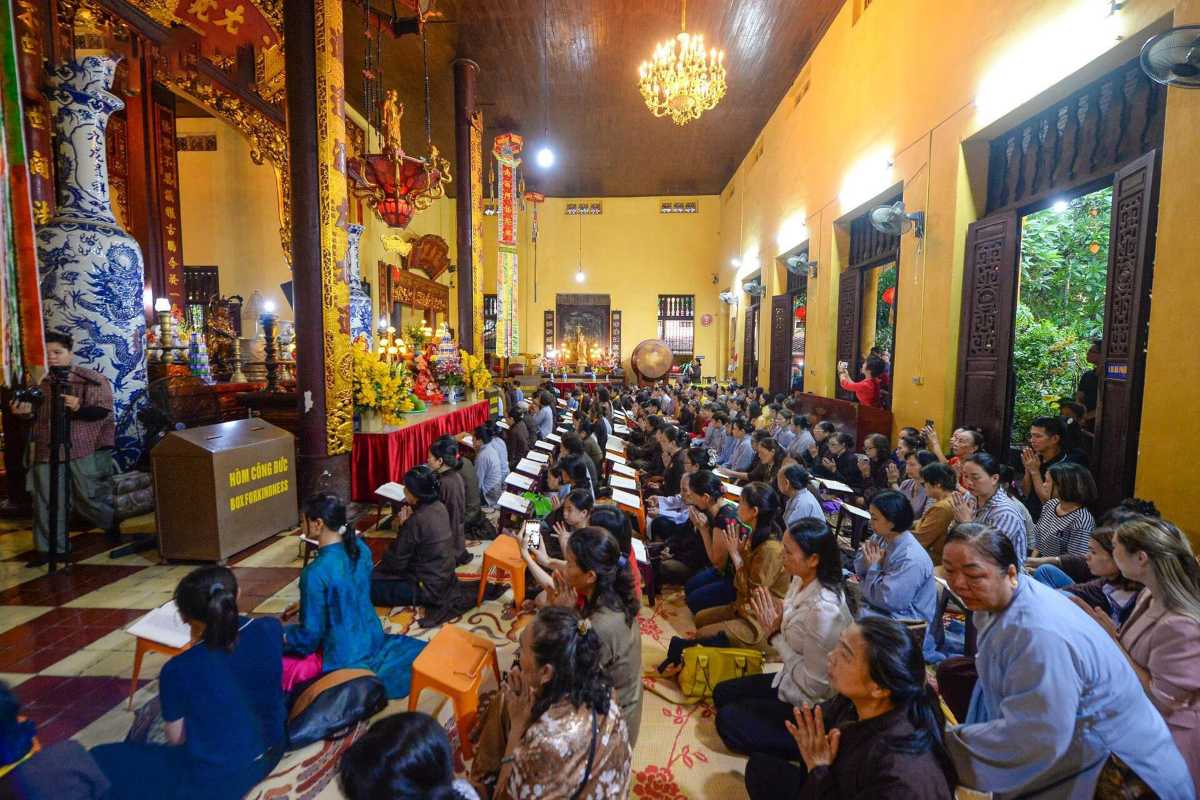
Nearby Attractions and Complementary Experiences
Discover nearby attractions in Hanoi including Hoan Kiem Lake, Ngoc Son Temple, and Hanoi Old Quarter to enrich your visit to Quan Su Pagoda.
Exploring nearby attractions Hanoi adds depth and variety to your trip around Quan Su Pagoda. The area is rich with cultural landmarks, bustling markets, and historic sites all within easy reach. From the serene waters of Hoan Kiem Lake to the vibrant streets of the Hanoi Old Quarter, these destinations offer opportunities for sightseeing, shopping, and sampling local street food. Including these sites in your itinerary helps create a well-rounded cultural experience.
Enhance your visit by discovering these fascinating nearby places during your time in Hanoi.
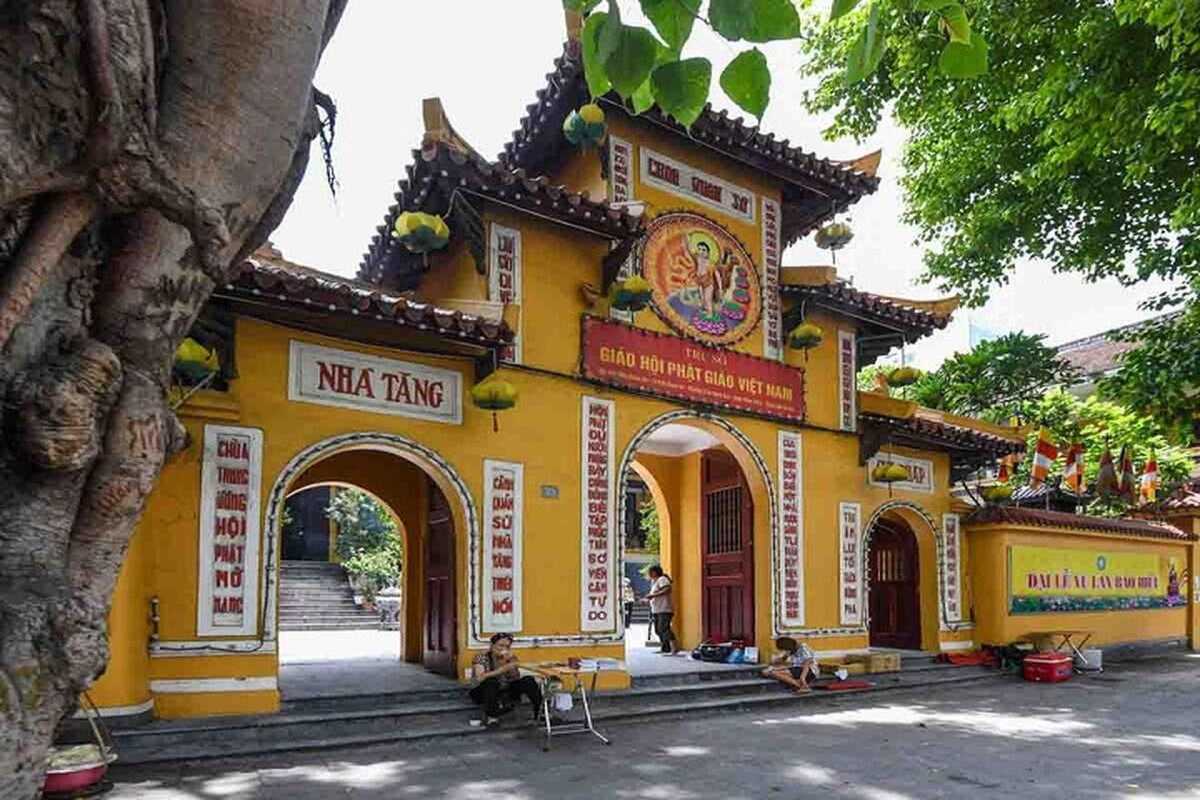
Hoan Kiem Lake and Ngoc Son Temple
Situated within walking distance, Hoan Kiem Lake and Ngoc Son Temple are iconic sites that complement a visit to Quan Su Pagoda. This area offers scenic beauty and cultural significance, ideal for a leisurely stroll or a reflective moment by the water.
Key highlights include:
- The picturesque Turtle Tower at the lake’s center.
- The historic Ngoc Son Temple perched on a small island connected by the famous red wooden bridge.
- Opportunities for local photography and cultural observation.
Visiting these sites together allows you to enjoy both natural tranquility and spiritual heritage in one outing.
Plan your day to include this walking distance Hoan Kiem Lake area for a seamless cultural experience.
Walking distance and what to see there
The walking distance Hoan Kiem Lake from Quan Su Pagoda makes it easy to explore key attractions on foot:
- Approximately 15-minute walk through Hanoi’s historic streets.
- Visit Turtle Tower and enjoy panoramic lake views.
- Explore Ngoc Son Temple and its intricate architecture.
- Relax at lakeside cafes and watch local activities.
These highlights make for an enjoyable and accessible visit.
Take advantage of the proximity for a convenient cultural outing near Quan Su Pagoda.
Combining visits for a cultural day tour
Maximize your cultural exposure by combining visits to Quan Su Pagoda with other nearby attractions in a well-planned day:
- Morning: Start at Quan Su Pagoda for spiritual insight.
- Midday: Walk to Hoan Kiem Lake and Ngoc Son Temple for scenic views and history.
- Afternoon: Explore the Hanoi Old Quarter for street food and shopping.
- Evening: Visit the Temple of Literature or Hoa Lo Prison Museum for deeper historical context.
This itinerary blends spiritual, natural, and cultural experiences efficiently.
Consider guided or self-guided options to make the most of your day combining these visits.
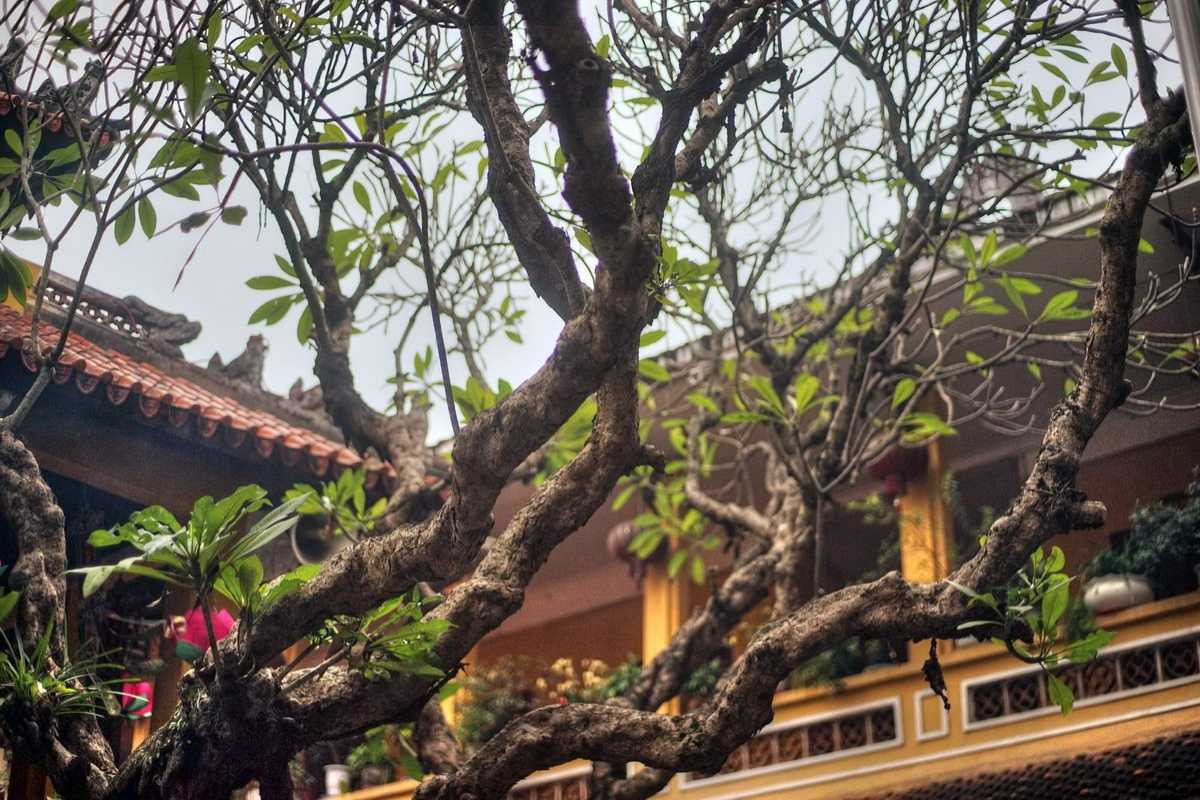
Hanoi Old Quarter Exploration
The Hanoi Old Quarter is a vibrant district bursting with culture, history, and sensory delights. Famous for its narrow streets and colonial architecture, it offers visitors an authentic glimpse into Hanoi’s bustling urban life. The area is renowned for its lively markets, flavorful street food, and abundant shopping opportunities. Exploring this neighborhood lets you immerse yourself in the energy and traditions that define the city.
Discover the rich variety of experiences available in the Hanoi Old Quarter and plan to include it in your itinerary.
Street food, markets, and cultural highlights
The Hanoi Old Quarter is a haven for food lovers and culture seekers alike, featuring:
- Street Food Stalls: Savor iconic dishes like pho, bun cha, and fresh spring rolls.
- Traditional Markets: Dong Xuan Market offers a bustling shopping experience with local goods.
- Cultural Sites: Temples, old houses, and vibrant street life reflect Hanoi’s rich heritage.
- Night Markets: Evening markets light up the streets with crafts, snacks, and live performances.
These highlights make the Old Quarter an essential stop for a true taste of Hanoi life.
Experience the flavors and sights of Hanoi street food and Hanoi markets during your visit.
Shopping and local artisan experiences
For those seeking unique keepsakes, the Hanoi Old Quarter offers:
- Handicraft Shops: Featuring lacquerware, silk products, and traditional ceramics.
- Artisan Workshops: Watch craftspeople create jewelry, textiles, and paintings.
- Souvenir Boutiques: Find souvenirs ranging from postcards to handcrafted gifts.
- Tailor Shops: Custom clothing tailored with expert skill.
These options provide authentic shopping experiences that support local artisans and preserve Vietnamese crafts.
Plan your visit to enjoy shopping in Hanoi Old Quarter for memorable cultural finds.
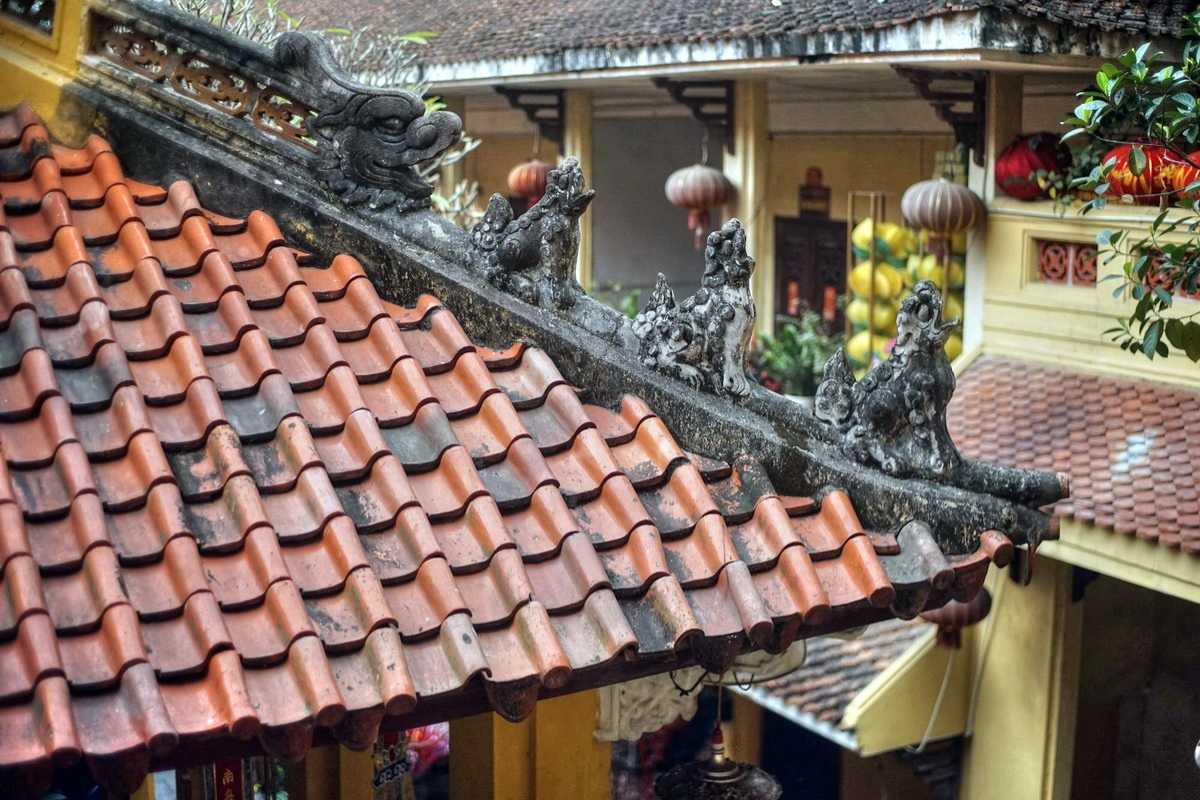
Other Religious Sites Close By
Near Quan Su Pagoda, visitors can explore several other significant religious and historical sites that deepen understanding of Hanoi’s cultural heritage. These sites offer unique perspectives on Vietnam’s spiritual and historical journey, making them valuable additions to your itinerary.
Extend your cultural exploration by visiting these nearby landmarks alongside Quan Su Pagoda.
Temple of Literature
The Temple of Literature Hanoi is Vietnam’s first national university and a revered Confucian site. It features elegant traditional architecture, serene gardens, and stone stelae honoring scholars. Visitors come to admire its historic significance, learn about Vietnam’s educational heritage, and enjoy peaceful surroundings. The temple hosts various cultural events and exhibitions throughout the year.
Plan a visit to the Temple of Literature Hanoi to experience Vietnam’s scholarly and spiritual traditions.
Hoa Lo Prison Museum
The Hoa Lo Prison Museum offers a sobering look into Vietnam’s colonial and war history. Originally built by the French, it housed political prisoners and later American POWs during the Vietnam War. The museum presents artifacts, exhibits, and reconstructed prison cells that educate visitors on the country’s struggle for independence and resilience.
Gain historical insight by including the Hoa Lo Prison Museum in your Hanoi itinerary.
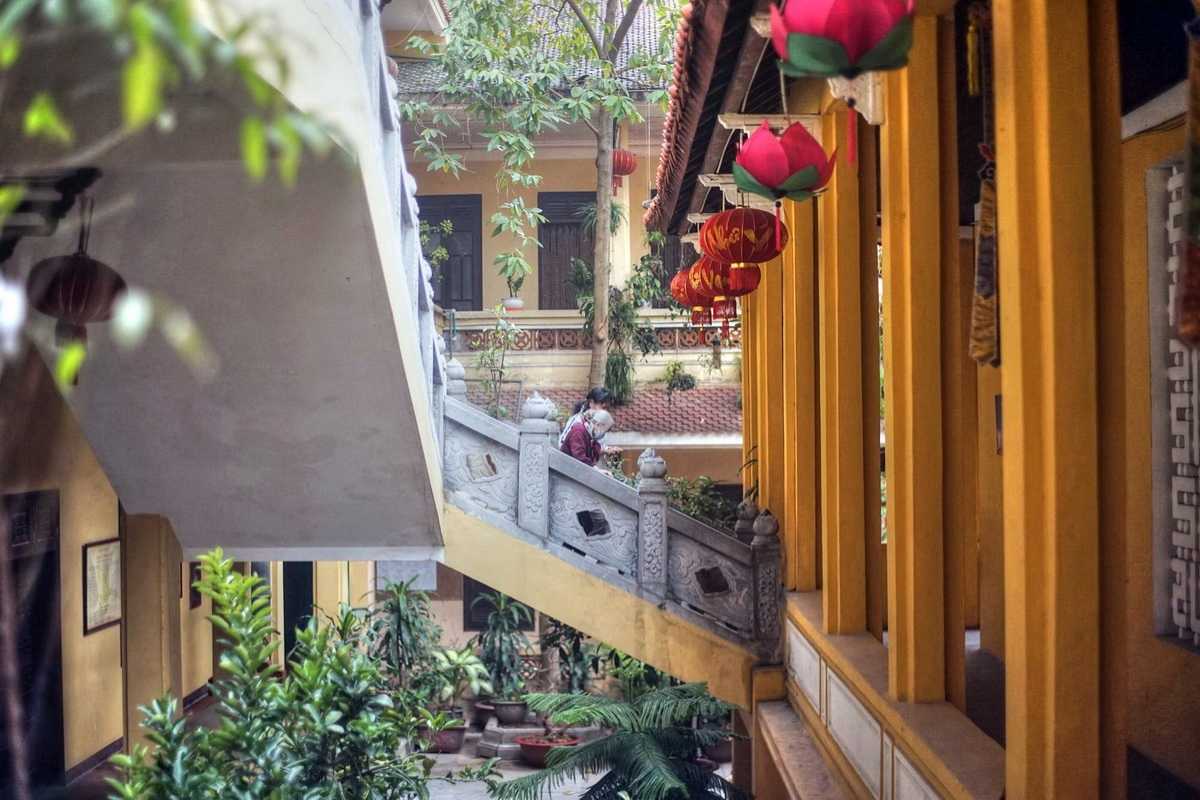
Recommended Walking and Cycling Routes
For active travelers, exploring walking routes Hanoi and cycling routes Hanoi offers an engaging way to connect multiple key attractions around Quan Su Pagoda. These routes allow you to experience Hanoi’s vibrant street life, historical sites, and cultural hotspots at your own pace. Whether you prefer self-guided adventures or organized tours, planning your route helps maximize your time and enjoyment.
Discover suggested routes to navigate the city’s highlights efficiently and enjoyably.
Routes that connect multiple key sites
Consider these routes to visit several important locations in one trip:
- Walking Route: Start at Quan Su Pagoda, proceed to Hoan Kiem Lake, then explore Ngoc Son Temple, and finish at the Hanoi Old Quarter.
- Cycling Route: Begin at Quan Su Pagoda, cycle along the Red River, visit the Temple of Literature, then head to the Hoa Lo Prison Museum.
- Routes include stops at local markets and street food vendors for breaks and cultural immersion.
- Maps and apps are available to help navigate these routes safely and enjoyably.
These routes provide a comprehensive experience of Hanoi’s rich cultural fabric.
Tips for guided or self-guided tours
Choosing between guided and self-guided tours depends on your preferences and travel style:
- Guided Tours Hanoi offer expert commentary, easy navigation, and cultural insights.
- Self-Guided Tours provide flexibility and the chance to explore at your own pace.
- Prepare by researching routes, checking weather, and carrying water and sun protection.
- Consider booking through trusted providers or local agencies for safety and support.
These tips help you select the best tour option for a rewarding Hanoi exploration.
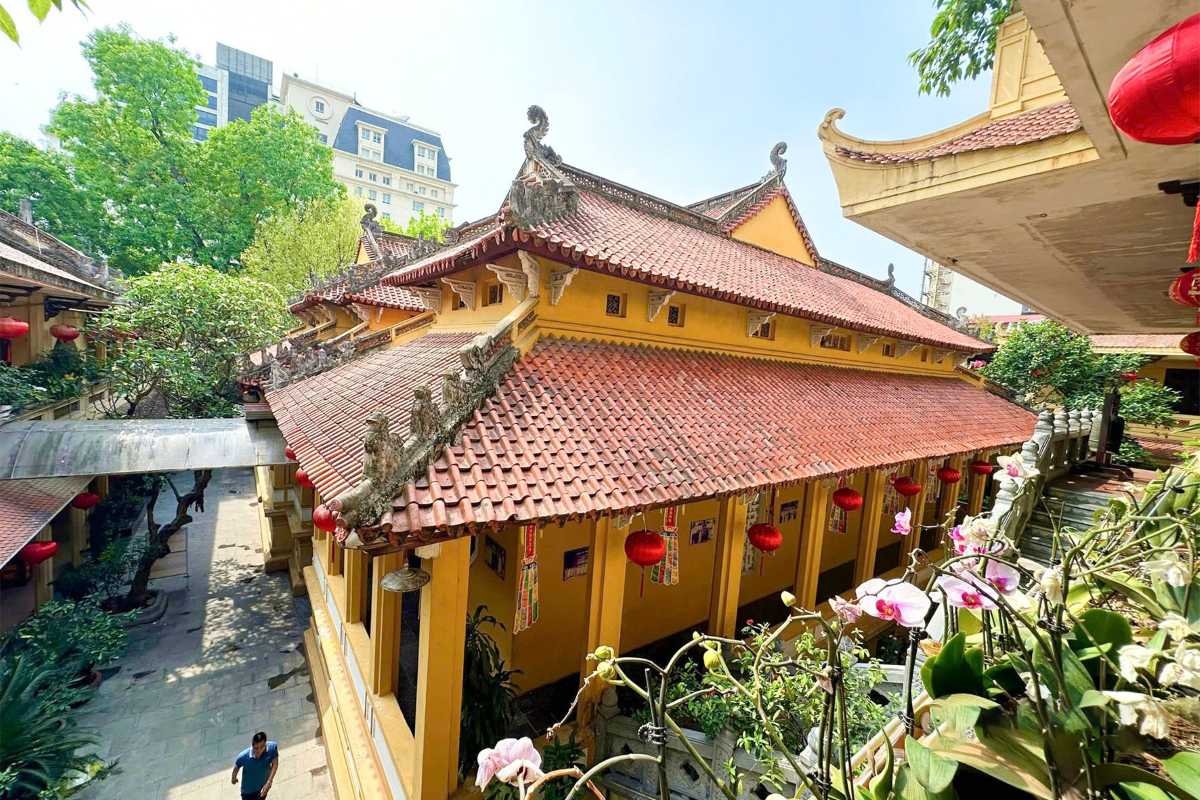
Practical Visitor Tips and Recommendations
Get practical visitor tips for Quan Su Pagoda including best times to visit, dress code, language help, and safety advice.
To ensure a smooth and respectful experience, follow these practical visitor tips Quan Su Pagoda. Knowing when to visit, what to wear, and how to behave can enhance your time at the pagoda. This section offers actionable advice on timing, etiquette, language, and health to help you prepare and enjoy your visit with confidence and respect.
Plan ahead with these essential tips for visiting Quan Su Pagoda.
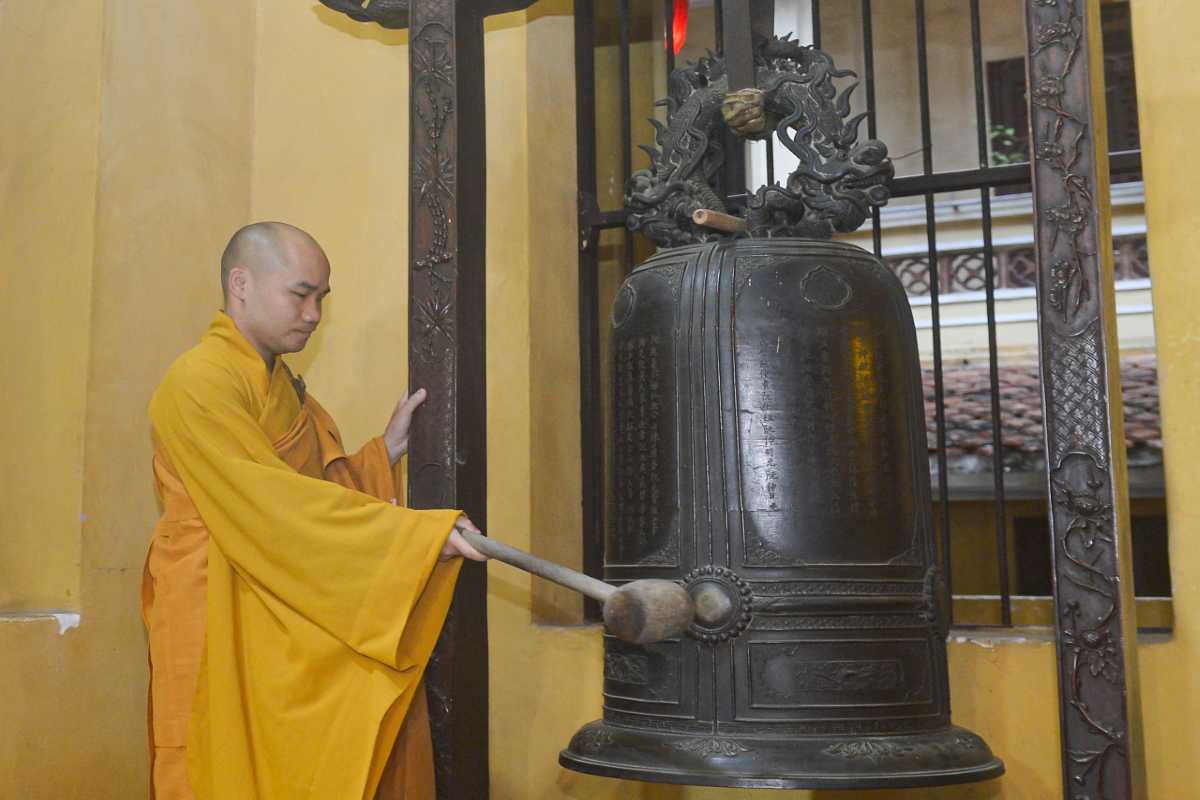
Best Times to Visit
Choosing the best times to visit Quan Su Pagoda can help you avoid crowds and enjoy pleasant weather. Consider the following:
- Hanoi’s dry season from October to April offers cooler, comfortable conditions.
- Early mornings or late afternoons are ideal to avoid peak visitor hours.
- Avoid major Vietnamese holidays when the pagoda tends to be busiest.
- Seasonal considerations Hanoi include occasional rains in summer, which may affect outdoor activities.
Visiting during these times ensures a more peaceful and enjoyable experience.
Seasonal considerations and weather tips
Understanding Hanoi’s weather helps you plan your visit:
- Dry Season (Oct-April): Cooler temperatures, ideal for sightseeing.
- Wet Season (May-Sept): Frequent rains, carry an umbrella or raincoat.
- Spring and Autumn: Mild temperatures and clear skies.
- Dress accordingly for humidity and occasional temperature shifts.
These tips help you prepare for seasonal changes while visiting Quan Su Pagoda.
Avoiding crowds and peak hours
To enjoy a quieter visit, consider:
- Arriving early in the morning before the main influx of visitors.
- Visiting on weekdays rather than weekends or holidays.
- Exploring lesser-known areas within the pagoda during busy periods.
- Using guided tours that offer off-peak access when possible.
These strategies help you avoid crowds and experience the pagoda’s tranquility.
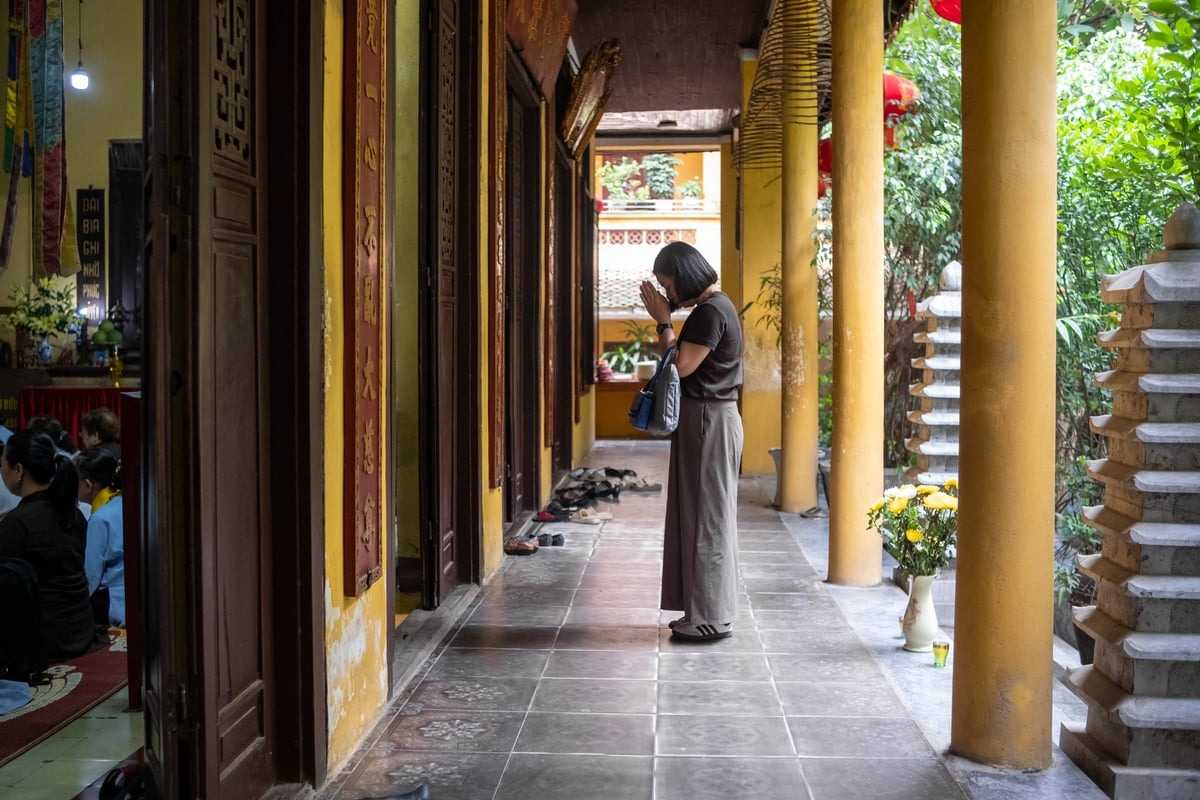
What to Wear and Behavior Guidelines
Visiting Quan Su Pagoda calls for mindful dress and conduct to honor its religious customs. Understanding the dress code Quan Su Pagoda and proper behavior ensures you show respect to the sacred space and its worshippers. This section outlines key guidelines for attire and etiquette to help you navigate your visit with cultural sensitivity.
Follow these recommendations to maintain respect during your time at Quan Su Pagoda.
Dress code for respectful temple visits
Appropriate attire for visiting Quan Su Pagoda includes:
- Wearing modest clothing that covers shoulders and knees.
- Avoiding shorts, sleeveless tops, and revealing outfits.
- Choosing comfortable, clean clothes suitable for a spiritual setting.
- Removing hats and sunglasses when entering prayer halls.
Observing these standards respects the sacred atmosphere and local customs.
Adhering to temple visit etiquette Vietnam helps ensure a respectful and smooth visit.
Appropriate conduct during ceremonies
During rituals and ceremonies, visitors should:
- Maintain silence and speak softly to avoid disruption.
- Refrain from using mobile phones or flash photography.
- Follow instructions from temple staff or monks.
- Show reverence by bowing or joining prayers respectfully if invited.
- Avoid touching sacred objects or interfering with worshippers.
These behaviors uphold the dignity and sanctity of Quan Su Pagoda ceremonies.
Respect behavior during ceremonies to honor the traditions and community at the pagoda.

Language and Communication Tips
Navigating language differences can enhance your experience at Quan Su Pagoda. Learning a few Vietnamese phrases for tourists helps you connect with locals, while knowing about English-speaking guides Hanoi ensures access to informative tours. These tips support effective communication and enrich your visit.
Prepare to engage confidently with the community and your tour guides at Quan Su Pagoda.
Useful Vietnamese phrases for visitors
Here are some basic Vietnamese phrases for tourists that can help during your visit:
- Xin chào (Hello)
- Cảm ơn (Thank you)
- Xin lỗi (Excuse me / Sorry)
- Bao nhiêu tiền? (How much is it?)
- Nhà vệ sinh ở đâu? (Where is the restroom?)
Using these simple phrases shows respect and opens friendly communication with locals.
Incorporate these phrases to make your visit to Quan Su Pagoda more enjoyable and interactive.
Availability of English-speaking guides
Many tour operators in Hanoi provide English-speaking guides Hanoi who can accompany you to Quan Su Pagoda. These guides offer detailed explanations of the pagoda’s history, architecture, and spiritual practices. Booking a guided tour with an English-speaking expert ensures you fully understand and appreciate the site.
Check with local agencies or Asia Travel Links for options to book trusted English-speaking guides.
This service makes your visit to Quan Su Pagoda accessible and informative regardless of language barriers.

Safety and Health Advice
Visiting Quan Su Pagoda safely requires awareness of common risks and health precautions. This section provides clear safety tips Hanoi and guidance on staying healthy during your trip. Being prepared helps you enjoy your visit with peace of mind and confidence.
Follow these safety and health guidelines to ensure a secure and comfortable experience at Quan Su Pagoda.
General safety tips around the area
To stay safe near Quan Su Pagoda, keep these points in mind:
- Watch your belongings in crowded areas to avoid pickpocketing.
- Stay aware of traffic when crossing streets, as Hanoi traffic can be busy.
- Use reputable taxi or ride-hailing services for transport.
- Keep hydrated and avoid walking alone late at night.
- Follow local regulations and respect signs within the pagoda grounds.
Applying these safety tips Hanoi helps you avoid common risks and stay secure.
Health precautions for visitors
Maintain good health during your visit with these precautions:
- Drink bottled or purified water to prevent illness.
- Use sunscreen and wear hats to protect from sun exposure.
- Carry insect repellent to guard against mosquito bites.
- Rest adequately and avoid overexertion in hot weather.
- Seek medical help promptly if feeling unwell.
Observing these health precautions Vietnam helps ensure a pleasant and safe trip.
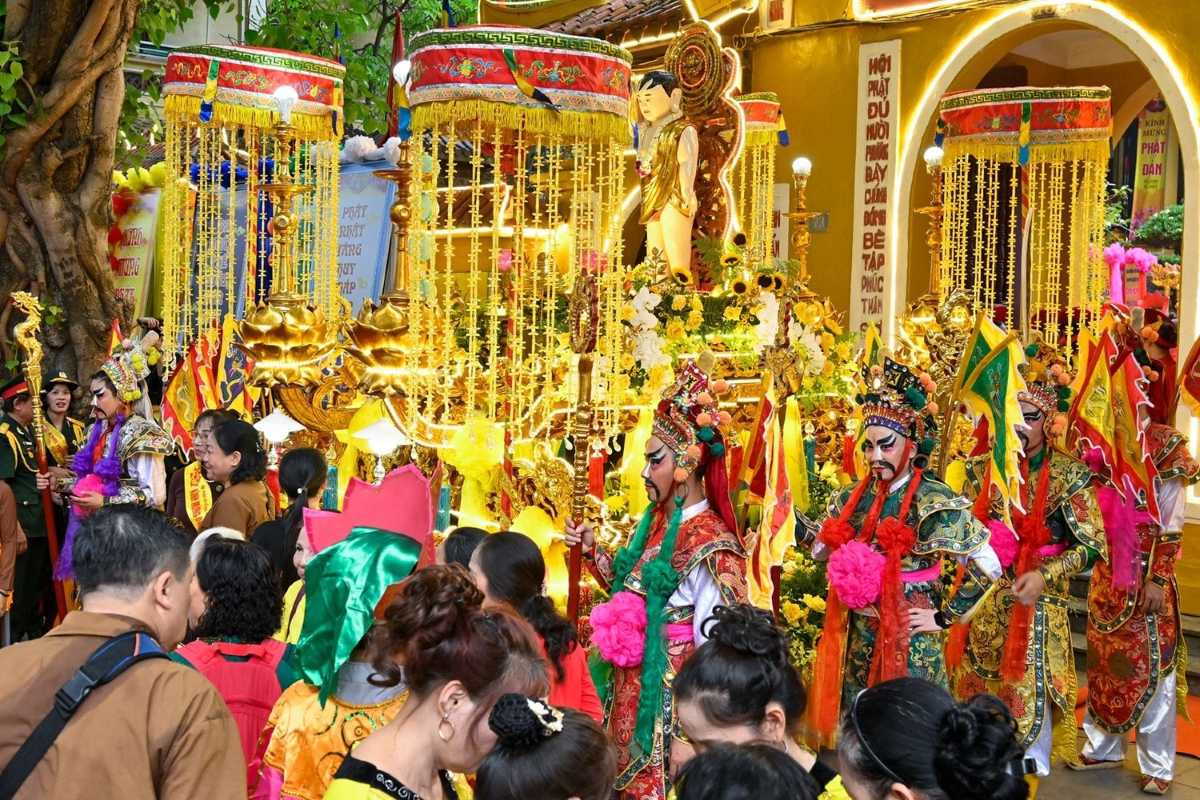
Conservation, Sustainability, and Cultural Preservation
Learn about conservation efforts, sustainable tourism, and cultural preservation at Quan Su Pagoda to protect its heritage for future generations.
The conservation Quan Su Pagoda involves ongoing initiatives to protect this historic site while promoting sustainable tourism. These efforts ensure the pagoda’s architectural beauty, religious artifacts, and cultural significance endure. Community engagement and visitor impact management play vital roles in preserving both the physical site and local traditions.
Understanding these preservation activities highlights the importance of responsible travel and cultural respect at Quan Su Pagoda.
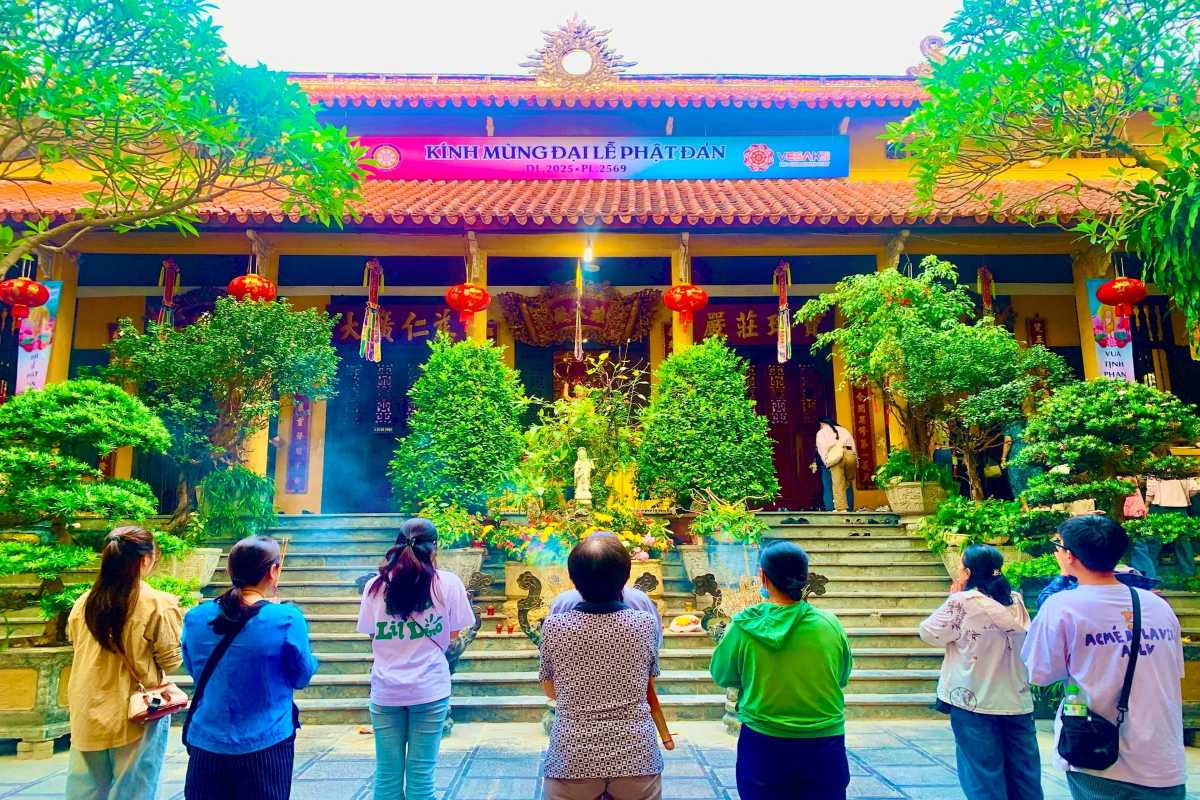
Conservation Efforts at Quan Su Pagoda
Recent restoration projects Quan Su Pagoda have focused on preserving the temple’s structure and sacred artifacts. Key initiatives include:
- Repairing damaged roof tiles and wooden beams to maintain architectural stability.
- Cleaning and restoring statues and religious relics with expert care.
- Implementing visitor guidelines to minimize wear and tear on the premises.
- Collaborating with local artisans to revive traditional craftsmanship techniques.
These projects support the long-term preservation and appreciation of Quan Su Pagoda.
Recent restoration projects
Notable conservation work at Quan Su Pagoda includes:
- Structural reinforcement completed in the past five years to ensure safety.
- Restoration of frescoes and murals depicting Buddhist stories.
- Upgrading visitor facilities to reduce environmental impact.
- Training local craftsmen in heritage restoration skills.
These efforts safeguard the temple’s historic and spiritual value.
Preservation of art and architecture
Preserving the artistic and architectural heritage involves:
- Protecting wood carvings and stone sculptures from decay.
- Maintaining the pagoda’s traditional Vietnamese architectural style.
- Regular cleaning and conservation of altars and decorative elements.
- Documenting and archiving the site’s cultural artifacts.
Such care ensures the continued cultural significance of Quan Su Pagoda for visitors and future generations.
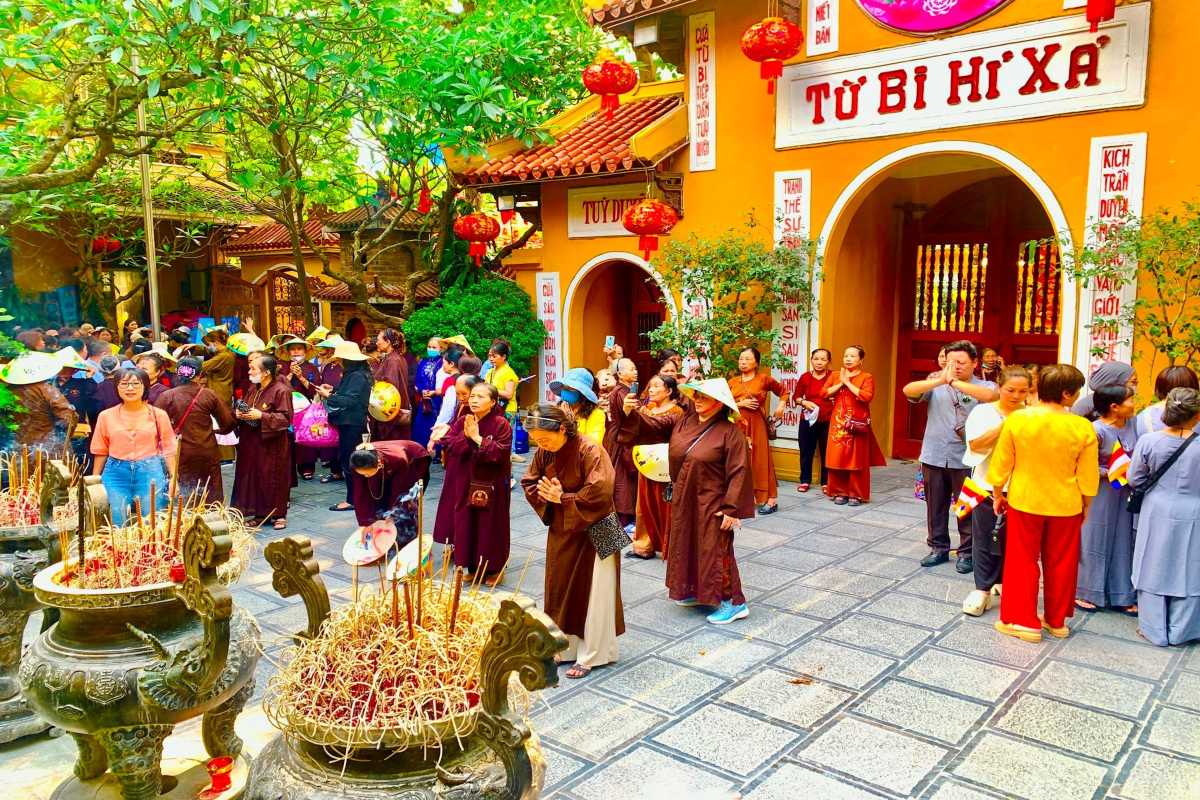
Role in Promoting Sustainable Tourism
Sustainable tourism Hanoi practices at Quan Su Pagoda focus on balancing visitor access with preservation. The pagoda actively manages tourism to protect its cultural and environmental integrity. Through careful visitor impact management and strong community engagement, the site encourages responsible travel that supports both heritage conservation and local well-being.
Visitors can appreciate how sustainability efforts maintain the pagoda’s legacy while enhancing the visitor experience.
Managing visitor impact
To minimize tourism’s negative effects, Quan Su Pagoda employs several strategies:
- Limiting visitor numbers during peak times to reduce overcrowding.
- Providing clear signage to guide respectful behavior and protect sensitive areas.
- Encouraging use of designated pathways to prevent damage to grounds.
- Implementing waste reduction and recycling programs within the site.
These measures help preserve the pagoda’s physical and spiritual environment.
Community engagement and education
The local community plays an essential role in sustaining Quan Su Pagoda through:
- Organizing educational workshops about cultural heritage and conservation.
- Involving residents in festivals and traditional ceremonies hosted at the pagoda.
- Promoting awareness of sustainable tourism benefits among visitors and locals.
- Supporting local artisans and religious practitioners through tourism initiatives.
These efforts strengthen social bonds and ensure the pagoda’s ongoing cultural vitality.

Cultural Preservation Initiatives
Cultural preservation initiatives at Quan Su Pagoda focus on safeguarding traditional customs and promoting Vietnam’s rich spiritual heritage. The pagoda actively supports festivals and religious practices that sustain local culture. These programs invite visitors to witness authentic celebrations and deepen their connection to Vietnam’s living traditions.
Explore how these initiatives maintain the cultural heartbeat of Quan Su Pagoda and the surrounding community.
Hosting traditional festivals and events
Key traditional festivals Hanoi held at Quan Su Pagoda include:
- Vesak Festival celebrating Buddha’s birth, enlightenment, and passing with prayers and lantern ceremonies.
- Mid-Autumn Festival featuring cultural performances and offerings for children and families.
- Annual temple fairs that blend religious rituals with local food and crafts markets.
- Seasonal ceremonies marking important dates in the Buddhist calendar.
These events offer visitors a chance to experience Hanoi’s spiritual vibrancy firsthand.
Supporting local religious practices
The pagoda continues to nurture local religious practices Vietnam by:
- Hosting daily chanting, meditation, and prayer sessions open to the community and visitors.
- Providing facilities for monks and practitioners to conduct rituals.
- Encouraging education about Buddhist teachings and ethics.
- Preserving intangible heritage through storytelling and oral traditions.
This ongoing support ensures the spiritual life of Quan Su Pagoda remains vibrant and meaningful.

Planning Your Visit to Quan Su Pagoda
Plan your visit to Quan Su Pagoda with practical tips on itinerary, accommodation, transport, and dining to enhance your Hanoi experience.
Planning your visit Quan Su Pagoda involves organizing your time and logistics to maximize your Hanoi trip. This section provides practical advice on including the pagoda in your itinerary, booking tours, finding nearby accommodations, and exploring dining options. With clear guidance, you can create a smooth and enriching travel experience.
Prepare effectively to make the most of your time at Quan Su Pagoda and beyond.

How to Include Quan Su Pagoda in Your Hanoi Itinerary
Maximize your trip by planning a Hanoi itinerary including Quan Su Pagoda. Consider these tips:
- Combine a morning visit to Quan Su Pagoda with nearby attractions like Hoan Kiem Lake and Ngoc Son Temple.
- Schedule afternoons exploring the Hanoi Old Quarter for shopping and street food.
- Use multi-site visit transportation Hanoi options like taxis or cycling for convenient travel.
- Allocate time for guided tours or self-guided exploration based on your preferences.
Efficient planning helps you enjoy more of Hanoi’s culture and history in less time.
Suggested day plans including other attractions
Sample day plans to include Quan Su Pagoda:
- Day Plan 1: Morning at Quan Su Pagoda, midday at Temple of Literature, afternoon in Hanoi Old Quarter.
- Day Plan 2: Early visit to Quan Su Pagoda, lunch near Hoan Kiem Lake, evening walking tour of historic sites.
- Day Plan 3: Combine Quan Su Pagoda with a cycling route covering Hoa Lo Prison Museum and local markets.
These examples help visualize and organize your travel day effectively.
Transportation logistics for multi-site visits
Getting around Hanoi efficiently:
- Use taxis or ride-hailing apps for quick, flexible travel between sites.
- Consider renting bicycles for scenic, eco-friendly transportation.
- Public buses offer budget-friendly routes but require navigation skills.
- Plan routes to minimize backtracking and maximize sightseeing.
Choosing the right transport enhances your overall Hanoi experience.
Booking Tours and Services
Booking a tour can enhance your visit to Quan Su Pagoda by providing expert guidance and deeper insights. Understanding how to select and book tours with reliable providers empowers you to make confident travel decisions. This section explains your options and highlights trusted resources for arranging your visit.
Take advantage of available services to enrich your Quan Su Pagoda experience.
Recommended local tour operators
Here are some reputable local tour operators Hanoi that offer services to Quan Su Pagoda:
- Asia Travel Links: Known for knowledgeable guides and personalized service.
- Hanoi City Tours: Offers group and private tour options with flexible schedules.
- Vietnam Travel Experts: Specializes in cultural and spiritual site tours.
- Authentic Hanoi Tours: Focuses on immersive local experiences.
Choosing a trusted operator ensures safety, expertise, and a memorable visit.
Options for private and group tours
When selecting tours for Quan Su Pagoda, consider:
- Private tours: Offer personalized attention, flexible itineraries, and in-depth explanations.
- Group tours: More affordable, social, and structured with fixed schedules.
- Both tour types provide guided visits, often including transportation and multi-site itineraries.
- Evaluate based on your preferences for privacy, budget, and learning style.
Choosing the right tour format enhances your engagement and satisfaction.

Accommodation Near Quan Su Pagoda
Finding the right place to stay can greatly enhance your visit to Quan Su Pagoda. Whether you prefer budget-friendly options or luxurious comfort, Hanoi’s Old Quarter offers a wide range of accommodations close to the pagoda. This section helps you plan a comfortable and convenient stay.
Explore lodging choices that suit your travel style and budget near Quan Su Pagoda.
Hotels and guesthouses in the Old Quarter
Popular lodging near Quan Su Pagoda includes:
- Boutique hotels with traditional Vietnamese décor.
- Guesthouses offering homely atmospheres and local hospitality.
- Mid-range hotels with modern amenities and central locations.
- Hostels for budget-conscious travelers seeking social environments.
The Hotels Old Quarter Hanoi area provides excellent access to attractions, dining, and transport.
Budget to luxury options
Accommodation prices vary widely:
- Budget hotels Hanoi Old Quarter: Affordable rooms with essential facilities starting from reasonable rates.
- Mid-range hotels offering enhanced comfort and services.
- Luxury hotels with premium amenities, spa services, and cultural themes.
- Many options include free Wi-Fi, breakfast, and easy access to Quan Su Pagoda.
Choose the lodging that best fits your needs for an enjoyable Hanoi stay.

Dining Options Around the Pagoda
Exploring the area around Quan Su Pagoda offers a chance to savor authentic Vietnamese cuisine Hanoi and relax in charming local cafes. Whether you seek traditional flavors or a cozy spot to unwind, this section guides you through the culinary delights near the pagoda.
Discover the tastes and atmospheres that enhance your visit to Quan Su Pagoda.
Local Vietnamese cuisine highlights
Must-try dishes near Quan Su Pagoda include:
- Phở: Vietnam’s famous noodle soup with rich broth and fresh herbs.
- Bún chả: Grilled pork served with noodles and dipping sauce.
- Chả cá Lã Vọng: Turmeric fish specialty unique to Hanoi.
- Nem rán: Crispy spring rolls filled with meat and vegetables.
These dishes reflect the rich culinary traditions of Hanoi and offer a genuine taste of Vietnamese culture.
Cafes and restaurants with cultural ambiance
Enjoy dining in venues that combine food with atmosphere:
- Traditional tea houses featuring Vietnamese teas and snacks.
- Cozy cafes decorated with local art and heritage motifs.
- Restaurants with open-air seating overlooking historic streets.
- Places offering cultural performances alongside meals.
These spots provide immersive experiences to complement your visit to Quan Su Pagoda.

Conclusion
Reflecting on Quan Su Pagoda reveals its profound historical, cultural, and spiritual importance in Hanoi. This site offers a unique window into Vietnamese Buddhist traditions and architectural artistry. A visit here connects you with the spiritual heart of the city while honoring centuries of religious heritage.
Plan your trip thoughtfully to experience the serenity and cultural richness that Quan Su Pagoda provides.

Summary of Quan Su Pagoda’s significance and visitor experience
Quan Su Pagoda stands as a testament to Vietnam’s religious devotion and cultural resilience. Its historical roots, stunning architecture, and active spiritual life create a meaningful experience for visitors. Exploring the pagoda offers insights into local traditions and a chance to engage in peaceful reflection.
Recognize the pagoda’s significance as more than a tourist site but as a living cultural landmark.

Encouragement to explore and respect the site
When visiting Quan Su Pagoda, approach with respect and mindfulness. The pagoda remains a sacred space where local religious practices continue uninterrupted. Your thoughtful behavior supports cultural preservation and enriches your experience.
Embrace the opportunity to be part of this enduring heritage through a respectful visit.

Plan your visit to Hanoi’s spiritual heart
Plan your visit to Hanoi’s spiritual heart with confidence and ease. Use resources from Asia Travel Links for support in itinerary planning, bookings, and local advice. Our team is ready to help you experience Quan Su Pagoda fully and respectfully.
Reach out to Asia Travel Links to start your journey today.
Mike Nguyen
Travel Advisor
Mobile: +84917506881 (whatsapp available)
Email: contact@asiatravellinks.com
Faqs
Quan Su Pagoda is a historic Buddhist temple located in Hanoi, serving as the headquarters of the Vietnam Buddhist Sangha. It is significant for its rich cultural heritage, architectural beauty, and important role in Vietnamese religious life. The pagoda stands out as a spiritual center and a symbol of Vietnam’s Buddhist traditions.
- Founded during the Later Le dynasty, it has witnessed centuries of religious and political history.
- The architecture combines traditional Vietnamese and intercultural influences.
- It remains a vital place for worship, community events, and cultural preservation.
Visiting Quan Su Pagoda offers a deep insight into Vietnam’s spiritual heart and architectural legacy.
Getting to Quan Su Pagoda from the Hanoi Old Quarter is easy due to its central location. You can reach it by various transport methods suited to your preference.
- Walk: It is about a 15-minute walk from the Old Quarter, ideal for exploring local streets.
- Public Bus: Several bus lines stop near the pagoda; check local routes for the best option.
- Taxi or Ride-hailing: Convenient for quick and direct access, especially in hot weather.
- Cycling: A popular choice for active travelers wanting to combine sightseeing.
Clear signage and local maps make navigation straightforward. Plan your route ahead to enjoy a smooth journey.
Visiting Quan Su Pagoda is generally free of charge, making it accessible to all travelers. However, donations are welcomed and appreciated to support the upkeep and religious activities.
- No mandatory ticket fees apply to general visitors.
- Donations help maintain the site and fund community programs.
- Visitors should respect local customs when contributing.
Knowing this can help you plan your visit without unexpected costs while supporting cultural preservation.
Quan Su Pagoda is open daily, allowing visitors flexible timing to explore and worship. Knowing the hours helps you choose the best visit time.
- Typical visiting hours are from early morning (around 7:00 AM) to early evening (about 5:00 PM).
- Early mornings and late afternoons are less crowded and offer peaceful experiences.
- Hours may vary during special festivals or ceremonies.
Check for updated times before visiting to align your itinerary with pagoda availability.


